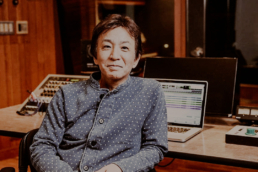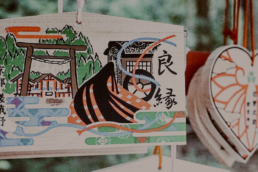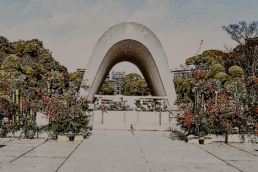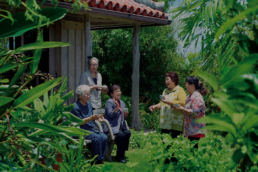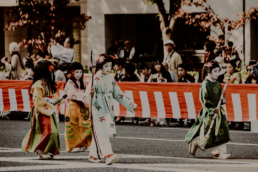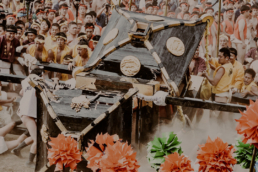Tokyo and the crossroads: Not just Shibuya Scramble
Imagine being immersed in vibrant and dynamic Tokyo, a place where every corner holds a surprise and every street tells a story. Shibuya Crossing is perhaps the epicenter of this overwhelming energy, an iconic symbol immortalized in countless shots. Here, the imposing commercial buildings, the glittering advertising signs and the incessant stream of pedestrians create a unique, almost magical atmosphere. But if your desire is to explore lesser-known, equally fascinating corners, here are five intersections of Tokyo that will make you fall in love with this city even more.

Credits: Savvytokyo
Sukiyabashi Crossing
The first is the Sukiyabashi Crossing in Ginza, a true hidden gem that offers a similar visual and sensory experience to Shibuya. The white and orderly pedestrian lines, together with the vitality of Ginza Sony Park and Sukiyabashi Park, create a futuristic and vibrant atmosphere. But what really makes this intersection special is the majestic Tokyu Plaza Ginza, with its façade inspired by Edo Kiriko glass. Known as the "Gateway to Ginza", this place defines the elegance and luxury of Tokyo's shopping district.

Credits: A. Wee
Nissan Crossing
Continuing into the heart of Ginza, you will find yourself at the intersection of Seiko House Ginza. This spot evokes the glamour of New York's Fifth Avenue, with its glittering shop windows and refined architecture. Here, Japanese luxury is palpable: on the one hand, the sophisticated Seiko watches; on the other, Nissan's cutting-edge cars and the innovative Sony showroom. Every corner exudes elegance and craftsmanship of the highest standard.

Credits japantravel.navitime.com
Roppongi Crossing
Moving to Roppongi, we find an intersection that shines especially at night. The lights of the skyscrapers illuminate the sky, creating an enchanting atmosphere. Roppongi Crossing is crossed by the Metropolitan Expressway, an imposing structure that adds a touch of urban grandeur. The "Roppongi" signs on the freeway are an unmistakable landmark, a symbol of this lively and cosmopolitan neighbourhood. When in the area, don't miss the opportunity to visit one of the many trendy bars in Roppongi.

Credits B.Lucava
Kabukicho Crossing
Another unmissable intersection is Kabukicho in Shinjuku. Here, Godzilla's head poking out of the Toho Cinema provides a surreal and iconic scene. Kabukicho is the beating heart of Tokyo's nightlife, with its neon signs, restaurants and bars crowded with students and salarymen. This red-light district, with its mix of pop culture and lively energy, offers endless photo opportunities and a unique experience.

Credits J. Jenkin
Asakusa Crossing
Finally, we cannot forget Asakusa Crossing, which marks the entrance to Nakamise-dori and leads to the majestic Sensoji Temple. This is one of the most recognizable views of Tokyo, dominated by the Kaminarimon Gate with its imposing lantern. The atmosphere here is steeped in history and tradition, enriched by the rickshaws that await tourists at the entrance. Crossing the street, you will find the Asakusa Culture Tourist Information Center, designed by Kengo Kuma, where you can enjoy breathtaking views of the surrounding area.
These crossings represent the essence of Tokyo, a city that knows how to surprise and fascinate every corner. Get ready to discover the magic that lies in these urban wonders and be inspired by their unique beauty.
Anime: a timeless form of art
How many of us grew up watching the "cartoons" (as we ignorantly used to define them) of "Dragon Ball", "Captain Tsubasa", "Sailor Moon", "The Rose of Versailles" and how many more!? Now that we are a few (many!) years older we can delve deeper into the concept and understand what they really represent for the Land of the Rising Sun.
These animated series feature a wide range of genres, styles and themes and it is a true art form that has deep roots in Japanese culture and has evolved over time, becoming a mainstay of entertainment both at home and abroad. They are not just a means of entertainment, but often deal with complex and universal themes, offering reflections on society, politics and human relationships. Their importance lies in their ability to convey emotions, tell engaging stories and explore complex concepts through an accessible and visually stimulating medium.

Credits anime.everyeye.it
Global heritage
Internationalization is a significant phenomenon that has made anime an integral part of global popular culture. In recent decades, they have gained large audiences outside of Japan, with an increasingly large fanbase around the world. This was facilitated by several factors:
- platforms like Netflix, Crunchyroll and Funimation have made it easily accessible in many parts of the world, allowing viewers to watch the latest series with subtitles or dubbing in different languages.
- social media and online communities have played a vital role in expanding the anime fanbase. Reddit, X and Discord have given fans a space to discuss, share fan art, theories and news, helping to create a sense of global community.
- Dedicated conventions are held around the world, offering fans the opportunity to meet in person, participate in panels, cosplay competitions and purchase exclusive merchandise.
Merchandise per tutti i gusti
The international success has also generated a vast market for products such as toys and action figures that reproduce iconic characters; clothing and accessories such as t-shirts, sweatshirts, caps and home gadgets: mugs, posters, cushions and many other objects.
We must also not forget the thriving videogames market: many anime have inspired videogames for consoles and mobile devices, which allow fans to further immerse themselves in the worlds of their favorite series.

Credits: voyapon.com
Support from the national government
The Japanese government has played a significant role in supporting the anime industry through policies and financial incentives, recognising the economic and cultural importance of the industry by providing direct funding and tax breaks to anime companies in order to promote the production and distribution of high quality content, and the government itself works with entities such as the Japan Foundation and the Japan External Trade Organisation (JETRO) to promote anime abroad. No less important is the strong commitment to the protection of intellectual property through which the government works to protect copyright and combat piracy by ensuring that anime companies and artists receive fair compensation for their work.

Credits: gurneyjourney.blogspot.com
Growth without borders
Unique style and rich storytelling make anime a global treasure that must not, however, lose its roots: this is a constant challenge, especially culturally. In our country, anime that is normally broadcast on television is censored; violent expressions or satire are included in the original version, which can raise open debates. Despite this, however, anime production companies must find a balance between artistic freedom and cultural sensitivity and continue in their unique and inimitable style.
What do you think about this special topic?
Travel with us
Japan Italy Bridge has just launched its exclusive “Your Japan”, a trip to Japan tailor-made for Italian tourists. This autumn, you will have the chance to go with us to Tokyo. An All Inclusive experience that will allow you to discover the beauties of the capital of Japan. Japan Italy Bridge will take care of everything, from booking flights and hotels to planning your travel plan. Furthermore, our guides will leave with you from Italy and will accompany you along the entire Japanese route.
So what are you waiting for? The time has come to pack your suitcase and travel with us!
The power of social media: TikTok and the Japanese pop star
We continue with our Business Focus column and today we are discussing the TikTok and Miki Matsubara case. Do you already know what we are talking about?
We've said many times before how social media is a powerhouse for businesses and individuals alike, and in this year's pandemic we've had confirmation of that. Even those who did not believe in the digital revolution have now had to change their minds.
How TikTok resurrected a Japanese pop star hit song
Author: Erika
In these months of quarantine and forced isolation, we have seen an increase in creativity on social media. A clear example of this is the rapid rise of TikTok, the favourite social media of young people, which has seen the number of users constantly growing to become the second most downloaded app in 2020.
From pranks to animals to the now famous dance videos, many TikTokers have launched trends that still accompany our days. But today the power of TikTok doesn't just stop with its trends. The case of Miki Matsubara and how a video shared on this social managed to revive one of his hits from 1979 has caused a stir.
In December, users of the platform resurrected the song 'Mayonaka no Door: Stay With Me', which made Matsubara a star in Japan back in 1979. More than 40 years later, the song is still catchy and joyful enough to become the perfect soundtrack to TikTok videos featuring Japanese mothers;
"I did the TikTok when my mum was doing things around the house," one user tells The Japan Times via email. This clip reached more than 1.5 million likes and views in a very short time, propelling "Mayonaka no Door" to the top of Spotify's Global Viral 50 chart for three weeks.
@kickronnie
I’m asking her to sing this next karaoke night 👸🏻 #japan #japanese #おかあさま #fyp
♬ 真夜中のドア/Stay With Me - Miki Matsubara
Unfortunately, Matsubara died in 2004 and was unable to enjoy the revival. However, the song's composer, 71-year-old Tetsuji Hayashi, tells the Japan Times that this new hit "seems very strange... it was so long ago".
Music and social media
.
But is it really that strange? Let's start with the fact that when a song is good, it's still good even after forty years, but let's also think about how much power social media has gained these days. Unfortunately, much of the Japanese music industry still seems to operate as if it were 1979, thus giving little importance to the digital and social media world. The Matsubara case is a case in point.
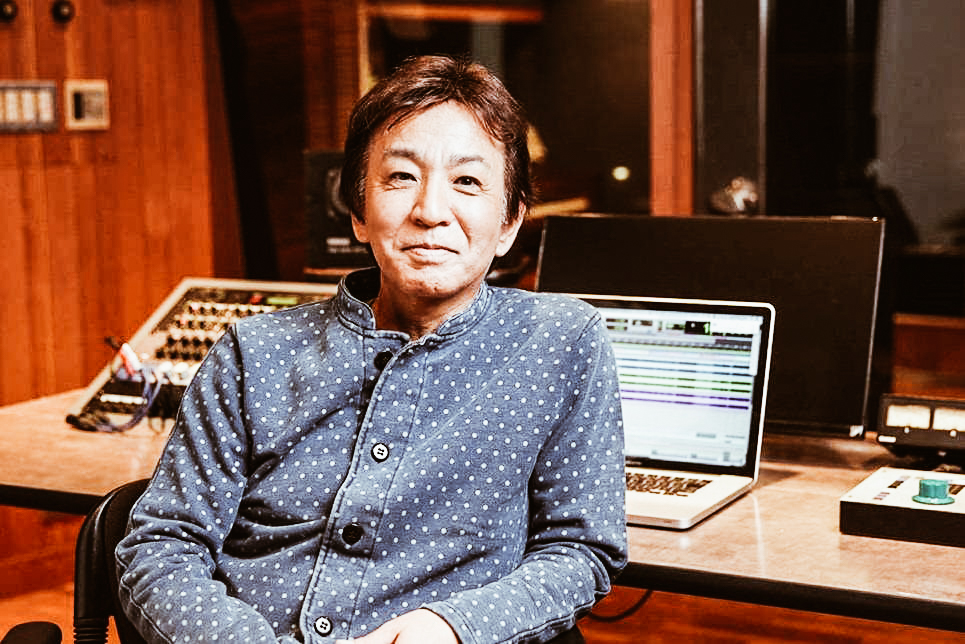
Singer-songwriter Tetsuji Hayashi says new technologies are rewriting the rules of how a song becomes a hit, "it could be from another country or another generation". It's been a few months now, but the 'Mayonaka no Door' case shows how the interaction between Japanese artists and international listeners has changed over the last few decades. International social media also allows a new generation to fall in love with an artist who might previously have been discarded from playlists simply because of her or his nationality. With the rise of K-pop and the unstoppable BTS, social media sites such as TikTok are also increasingly trending Japanese songs.
The power of TikTok
.
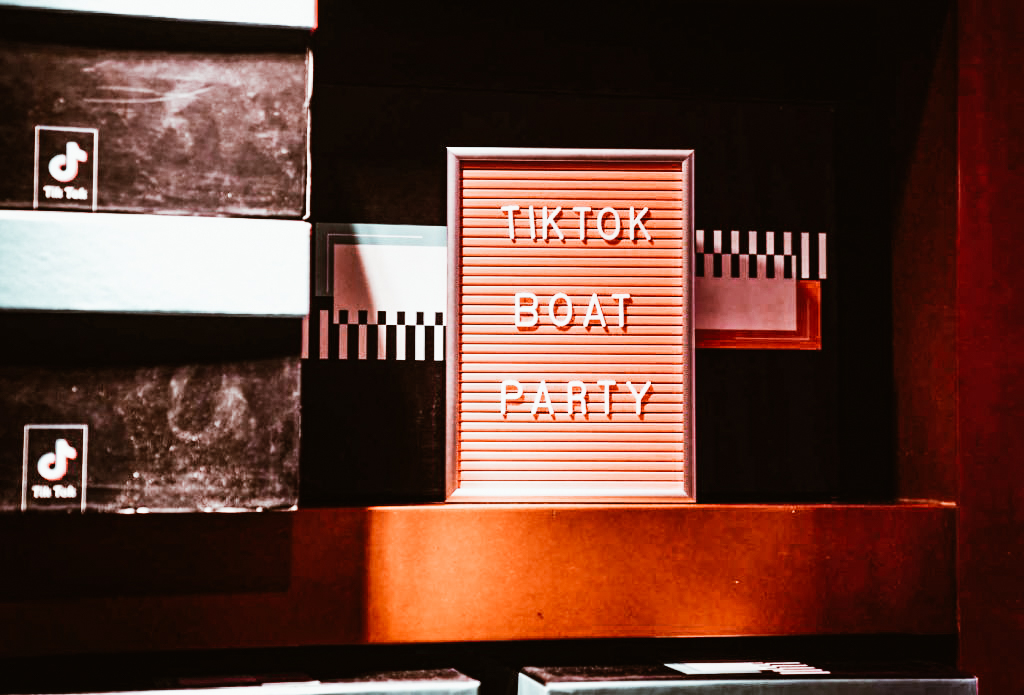
Based on recent statistics, TikTok users spend more than 850 minutes per month on the app, more than 14 hours per month. If we look at the data from October 2019 to March 2020, we can see a significant increase in the amount of time the average user spends on the app, also due to the lockdown.
This social media has spread like wildfire globally, particularly in Asian nations, becoming an entertainment outlet thanks in part to its search based on hashtags. In fact, as of June 2020, the most popular categories on TikTok all have over a billion views. If we go on to count lip-synching and dance videos, we arrive at a total of over 150 billion views.
2020 was marked by lockdowns, and it was during this time that people jumped on new media in search of entertainment and an outlet for their creativity. In fact, TikTok took second place on the list of most downloaded iPhone apps, surpassed only by Zoom for obvious reasons. TikTok even surpassed the downloads of Facebook, Messenger, Gmail, Netflix, YouTube and Instagram, across all app stores, making it the most popular app globally in 2020.
Moreover, in a world like the digital marketing one, we know how important the engagement rate of a social media is. Recent data show that engagement rate varies at different follower levels for Instagram, YouTube and other social media. However, at all follower levels, TikTok has a considerably higher rate than other platforms. In fact, Upfluence analysed that micro-influencers have an engagement rate of 17.96% on TikTok, compared to 3.86% on Instagram and 1.63% on YouTube. While mega-influencers have an engagement rate of 4.96% on TikTok, 1.21% on Instagram and 0.37% on YouTube.
The figures speak for themselves and in 2021 we can only expect a steady rise of this social network and who knows, maybe we can rediscover some other Japanese hits! Do you already have any idea on what the next music trend for TikTokers might be in 2021?
Ema tablets and the temples of Japan
The Japan Italy Bridge column continues to promote in-depth studies related to the world of Japan, today we talk about the Ema Tablets that we find in all the temples of Japan.
Raise your hand if you've never seen these curious wooden plates in an anime. Perhaps in a Shinto shrine, with a miko - the priestess dressed in red and white - going about her business. In any case, whether you've seen them before or not, today you can find out more.
Ema 絵馬 Japanese wooden votive tablets
Guest Author: Flavia
Translated as 'Horse Representation', Ema's are flat plaques designed to transcribe wishes and fears to be addressed to gods/spirits (kami) and buddhas. In other words, they represent a way for people to write a little message to the spiritual world. Formerly made of clay, they later began to be made of wood. Once a prayer has been written, the Ema is hung in a dedicated space at Shinto shrines as well as Buddhist temples. It is in fact a custom of Shinto origin that later spread to temples. Since they are all displayed together 'publicly', anyone can of course take a peek at them (it is important that the kami do the same).
However, it is also possible to keep them for oneself, as an heirloom. The great variety of representations, colours and styles that characterise them has always attracted the curiosity of folklorists. Together with the inscriptions on them, they represent a veritable prism through which a wide range of life stories are presented to us. A cross-section of spirituality that can show us the different colours of Japanese reality.
Ema are not the only religious objects designed to 'operate' in this sense, but they are perhaps the most widespread and can be found just about everywhere. The fact that they can be left in place distinguishes them from other religious objects such as Fuda (札) and O-Mamori (お守り). With an average width of 15 cm and a height of 9 cm, they can be very varied in size, shape and colour.
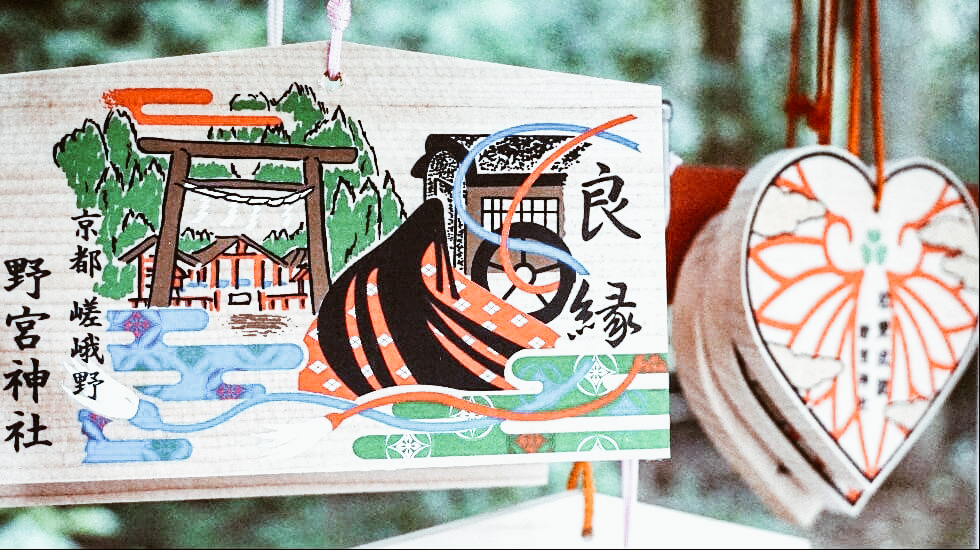
photo credits: sharing-kyoto.com/
The themes depicted can range from the following:
-
- the kami/buddha to whom the shrine or temple is dedicated (there may even be tablets depicting Thomas Edison!)
.
- the specific benefits that kami (spirits/goddesses) and buddhas are empowered to bestow;
- scenes on the origin and history of the place of worship;
- religious or cultural objects, such as zodiac animals of Chinese origin (some shrines are specifically dedicated to an animal-sign of the zodiac)
.
However, traditionally, particular importance is given to the representation of the horse, as suggested by the etymology of the name itself: e (絵) "image, drawing", but (馬) "horse".
Why the horse?
Short answer: because in ancient times people used to offer a horse to shrines and temples to obtain blessings and good luck. The figure of the 'sacred horse' still survives to this day, so much so that some religious centres use to keep one. And, if not in the flesh, in the form of a life-size model.
This sacredness of the horse originates from an ancient Shinto belief that saw the horse as an animal dear to the kami and as their messenger (although it is also important in Buddhism). One thing led to another, and so the horse quickly became a symbol carrying messages between the human world and the "other side". Or the Higan (彼岸) as it is also called in the anime/manga Noragami. (Noragami is highly recommended if you are attracted to the 'spiritual' genre, so to speak. Even through the author's fictional interpretation, it gives you a religious insight into Japan, and renders very well the relationship of the Japanese with spirituality).
Anyway, having established that our horse was considered special, the idea was to invoke a 'hand from heaven' in troublesome situations or events. For example, in times of drought they hoped for some rain (black horse) or, if not, for it to stop raining (white horse). However, in ancient times only a few people could afford to give a horse away easily. The majority of people tried to hold on to them as a valuable animal for their livelihood. Moreover, as the academic Ian Reader notes, such offerings could also prove costly for the temples if, at every prayer of some rich lord, they found themselves with a horse each time, which rightly had to be maintained, with the expense that this entailed.
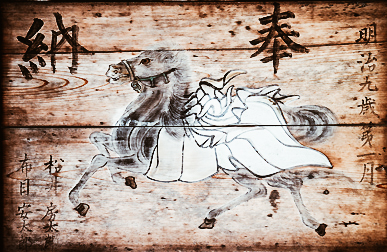
photo credits: japan-photo.de
It was in response to these contingent problems that the idea of depicting the horse began to emerge. Instead of using the animal in the flesh, why not make 'e-ma' ('horse-image') instead? An affordable solution, accessible to all.
Ema thus made their first appearance at the beginning of the 8th century (Nara period), while the first evidence comes to us from the mid-10th century (Heian period). The collection of Chinese poems and prose Honchō Bunsui or Monzui ( 本朝文粋 ) would be the very first work to mention the "ema". Many others would follow, one of which was the Konjaku monogatari (今昔物語).
E-ma: the origins of the tablets
.
Ema are said to have originated as a substitute for the horse in the act of conveying one's prayers to the supreme otherworldly entities. Although some voices have been heard to the contrary of this general line. Another reading of the events would in fact have it that the plates took on the definition "ema", simply because the horse design was more popular than other themes.
This is because the theme of the design changed depending on the request. Let's say that the design of an Ema was that of a horse: the requesting party's wish could concern the welfare of their horse (think of the case of the most humble, for whom such an animal was fundamental). If the wish did not concern a horse but, for example, a physical ailment, the design would depict the painful part of the body; and so on. So "ema" according to this view would not indicate that the tablets were given the same "agency" as the animal. Rather, it simply means that there were a lot of requests concerning horses, from which an extension of the designation would be triggered.
Another interpretation, however, emphasises that the sacredness of the horse is not a purely Shinto invention and that in Buddhism, too, the animal has its own significance. Thus, the origin of the Ema would perhaps be more to be found by looking back at the role of Buddhism, on which Japanese folk traditions draw extensively. In this regard, the scholar Gorai Shigeru saw a possible origin of the Ema in a particular folk custom, related to the Buddhist tradition O-Bon (お盆). This custom consists of carving horse forms from certain plants, again for votive purposes to the souls of the dead. Gorai seems to suggest that the origin of this custom may predate that attributed to the Ema or other similar forms of representation.
Both of these dissonant rumours about the origins of the Ema do not seem to be well supported by archaeology. In fact, the archaeological findings all seem to confirm the hypothesis of the need for an alternative means of transport to the horse, which at the same time 'took its place'. Something equivalent, embodying its spirit, its symbol: its image.
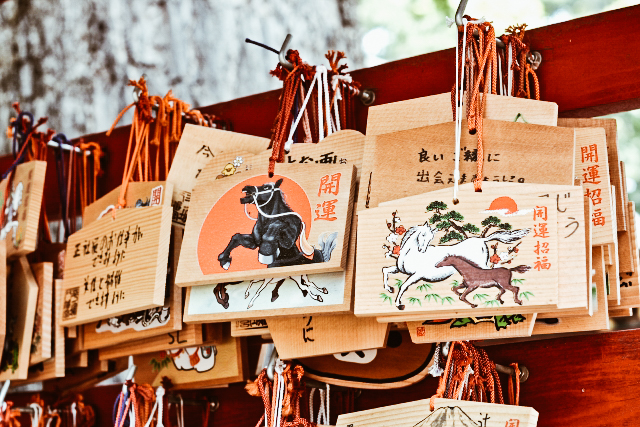
photo credits: shrine-temple-navi.jp
Ema as 'living objects'
.
The proof of this would come from the language itself. There are numerous ancient inscriptions on Ema that, from a linguistic point of view, unequivocally refer to the tablets as if they were talking about the horse itself. Let us look at some of them.
In the aforementioned Honchō Bunsui there is a reference to the Ema containing the symbol 匹 ("hiki", "biki" or "piki"). Reporting from the Reader, the expression would be: "色紙絵馬三匹 "or" 3 coloured sheets of horse pictures". Nowadays used as a counter for small animals, in Old Japanese the ideogram 匹 referred to stable animals, including horses. The combination of the word "ema" with this linguistic particle, whose function is to designate a living being, speaks volumes. Similar inscriptions have also been found in two shrines in Yamagata and Saitama, dating back to the 16th and 17th centuries. In this case, we find the ideogram 疋 instead of 匹, but the meaning and reading are the same. Again from Reader, it is: "shinme ippiki" (神馬一疋) and "ema ippiki" " 絵馬一疋 ". That is, "a sacred horse" and "an image of a horse".
However, although the hypothesis on the possible Buddhist origin of the tablets was not solid, Buddhism at least in retrospect is certainly present, given the Japanese syncretism. Among other things, in the temples, the Ema serve as a means of transmitting Buddhist religious doctrine, thus assuming a further function beyond that for which they were born. We are talking about those teachings about the importance of altruism or compassion (understood in Buddhism as 'empathy') or through images taken from stories about the Buddha. Although not entirely certain, it is estimated that the adoption of tablets by Buddhist temples began roughly between the 12th and 14th centuries (Kamakura period). Indeed, many of the Emaki - scroll artworks - of the period depict the Ema or horses themselves, both in Shinto shrines and Buddhist temples.
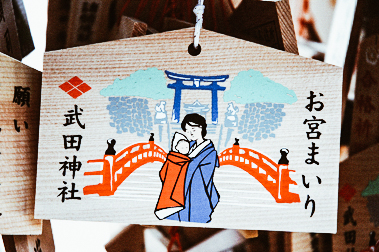

photo credits: japan-photo.de
Wooden tablets as an art form
.
Over the centuries, the designs of the Ema became more and more elaborate and varied, giving rise to a true folk art form. In particular, the Ō-ema (大絵馬), or "big ema", proved to be an important step in the development of Japanese art. In fact, after the birth of the Ō-ema, several great Japanese artists would draw on the ema style.
Created between the 14th and 16th centuries (Muromachi period), these Ema were at least one metre in height and width. They were donated to temples and shrines as a sign of gratitude - even after the fact, not only at the time of the request - and were placed in special spaces, the Ema-dō (絵馬堂). The oldest Ema-dō seems to have been sponsored by none other than... Toyotomi Hideyoshi in 1606, for the Kitano shrine in Kyoto. Also in Kyoto, the famous Kiyomizu-dera (清水寺) has several Ō-ema, originally donated by merchants as thanks for the safe return of their trading ships.
The consequence of this artistic development was the emergence of a "caste" of artists specialised in ema painting, which flourished in the Edo or Tokugawa period. This period - of economic expansion, especially at the beginning - led to an increase in the demand for professionals, enabling them to make a living from producing small ema paintings alone.

photo credits: japan-photo.de
The Ema language: symbolism
.
It was during this period that most of the symbols and themes reproduced on tablets originated. But to what does this need to put thoughts and feelings on paper - or rather, on wood - owe? This need is rooted in the folkloristic belief that a desire has a better chance of manifesting itself in reality if it is expressed in words, because by doing so, it gives it form. We must also bear in mind that in ancient times literacy was reserved for a small segment of the population. An alternative language to words, immediately comprehensible to all, was, therefore, necessary: this is the encounter between folklore and symbolism. Symbolic language thus proved to be the most effective way of doing this, through the depiction of specific problems or the desired 'grace'.
The representations could range from the well-being of children to health, fertility and even sexual desires. If, for example, a wish concerning childbirth, an Ema with a dog was the most appropriate choice. While the image of the white fox still indicates prosperity and abundance. For requests concerning health, the part of the body with the illness was also depicted. For those concerning fertility and sexuality, well: the depictions were unequivocal.

photo credits: himawari-japan.com
The type of representation can therefore be purely symbolic, drawn from tradition (see the example of the dog) or directly portray the physical object of interest (body parts). In any case, let us remember that such symbology, whether analogical or realistic, is accompanied by the thaumaturgical function of the various religious entities worshipped (spirits/gods/Buddhas). As we said at the beginning, 'protective deities' of a particular sphere of life (health, education and so on) are also a main iconic subject of the Ema. These are just examples, as subjects and styles can be as varied as people's requests and desires.
Ema language: forms and words
.
In the transition to the contemporary age, the traditional themes depicted have not changed much compared to ancient times. Of course there has been an addition of new subjects (see Thomas Edison or, why not, anime characters). However, we can observe an increase in the use of verbal language. We have already seen one reason for this: literacy. Literacy has thus added verbal language to symbolic language, allowing ordinary people to no longer depend solely on the former. So it is not uncommon nowadays to resort to linguistic games of homonymy and assonance to accompany the symbology of images.
Typical is the case of those Gokaku-ema (互角絵馬) - pentagonal tablets - with an 'educational' theme. They are designed for students, constantly seeking the support of the kami for success in their studies. Here, these Ema owe their shape to a pseudo-omonimy between the expression "gokaku" (互角) - pentagon - and "gōkaku" (合格) which indicates success in study. The subject of the Ema can therefore also be conveyed by the shape of the tablet itself! And, as you can see, it can sometimes make use of verbal meanings. A case of symbolism using verbal language is that of an Ema depicting an octopus, "tako" in Japanese (蛸) used to request help in eliminating corns. The term "callus" is spelled differently (胼胝) but is also pronounced "tako".
We can therefore see - to the delight of linguists and glottologists - that the ema language is made up of all these dimensions of communication. Symbols, shapes and words are thus integrated and intertwined in a single space. We should also remember that the graphic characters of the Japanese language derive from their ancestor pictograms, which directly represented visual objects!

photo credits: blog.livedoor.jp
Verbal language is very helpful in interpreting the meaning of a tablet's message. Because understanding the true meaning of symbolic language, needless to say, may not always be possible. Obviously, the use of verbal language does not guarantee 100% understanding, it depends on each case: there may be quite clear inscriptions, others more cryptic. The scholar Jennifer Robertson, who dealt with the Ema at the time of the Second World War, found a particular ambiguity in the tablets of this era. For this reason, she stresses the need to always take into account different possible interpretations.
Kogaeshi and Mabiki Ema, a special case
.
There is, however, a special type of Ema, where the message is neither a concern nor a need for something that is desired. A request, yes, but different from the others: a request for forgiveness. We are talking about all those plates that concern the delicate case of children, foetuses, aborted or stillborn: the so-called mizuko (水子). Ema concerning mizuko are called Kogaeshi (子がえし - lit. "sending back the baby"). Or even Mabiki (間引き - let's call it "reduction") which can refer to general infanticide.
In Buddhist temples specialising in mizuko (to which memorials are also dedicated), Kogaeshi Ema are hung in a special space, just for them, next to the statue of Jizō. In Buddhism, Jizō is a protective figure of the souls of children who died before their parents. According to belief, their spirits cannot cross the Sanzu - the river that separates earthly life from the "Other Side" - because they have not accumulated enough good deeds, due to premature death. They would therefore be condemned to pile up stones on the bank of the mystical river, but Jizō would protect them from demons and allow them to listen to mantras.
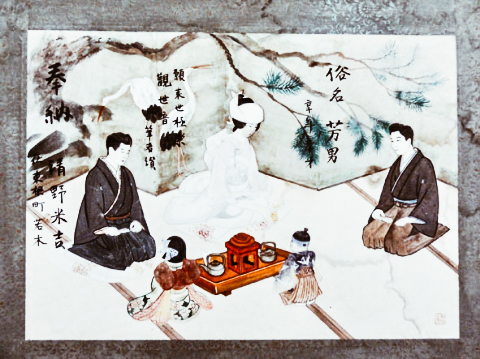
photo credits: hotoke-antiques.com
They differ from normal Ema, because their inscriptions are addressed to the spirit of the child, rather than to kami or buddha. Of course, they express all the anguish, sadness, regret of the mother or sometimes even both parents. The most common inscription, according to Reader, is a simple 'Gomen ne' (ごめんね) or 'I am sorry' ['Forgive me'] together with the reason for the gesture. This phenomenon was particularly striking at the turn of the late Edo and early Meiji periods, when extreme poverty and famine hit the Japanese population hard. The use of Mabiki Ema, however, has continued until contemporary times.
Mukasari Ema, another particular case
.
Another case of a death-related plaque is that of the Mukasari-ema (ムカサリ絵馬). In fact, these tablets were created for a singular purpose: to complete the CDs. Shirei Kekkon (死霊結婚), the marriages between dead souls. They belong to the category of large ema and, according to Robertson, their diffusion seems to be limited to Okinawa and the north-east of Japan, in the Yamagata Prefecture. "Mukasari' would in fact mean 'marriage' in the Yamagata dialect (not coincidentally written in the katakana alphabet). In essence, these Mukasari-ema allow to "simulate" in the representation of the plate, the marriage of a person who died single or unmarried. It is a way of allowing the soul to find peace, preventing it from becoming a tormented spirit.
For if that were to happen, the spirit might remain anchored in the earthly world, through grief, for not having been able to experience the joy of starting a family. Thus, haunting the world of the living. It is thus also a way for the family of the deceased person, however fictitious, to realise that dream. In modern times, one can also resort to photographs, if any, of the person in wedding attire while still alive. Such Mukasari-ema were particularly used at the time of the Second World War, for the reason easily imaginable.
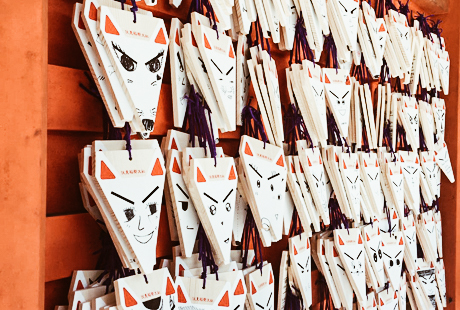
photo credits: journals.openedition.org
These are two borderline cases, the exception to the rule. Because, as is now clear, the Ema are made with an eye to human wellbeing, in the here and now, be it individual or extended to the whole of humanity. But they are still part of the Ema world and, if there is something that they have in common with the others, it is a significant function: the psychological function of releasing an inner burden. The very act of 'unloading' onto the tablets what one has inside - thoughts, desires, needs and concerns - is a profoundly cathartic act. Especially if those desires and needs run counter to the norms imposed by society. As Reader notes, a way for individuals to survive in situations beyond their normal control and the only way to survive, from social control.
People's desires
.
But in general, what specifically do people who have recourse to EMA want? We could identify two macro-areas: protection and success.
Health is certainly one of them, and it is a major theme at all times. As mentioned in the introduction, kami and buddha are associated with healing powers, attributed by extension also to shrines and temples dedicated to them. Requests for 'mercy' from illnesses and diseases - or for preventive protection from any danger - may concern the applicant himself, his family members, or other persons. Requests for success, which is a very popular area, may also concern the applicant or third parties, or a 'collective self' of which the applicant is a part. This is the case of all those requests made to propitiate the success of one's own company or institution of any other nature. There are Ema's for example where the requester is concerned with the success of their favourite team (baseball is very popular in Japan).
But there is one realm that stands out above them all: education. The contemporary Japanese education system is very rigid and competitive, and the pressure of failure on children can be particularly taxing, psychologically speaking. So, you want for that reason alone. Or even for inspiration - seeing friends or groups of peers go to religious centres to write their plaques - the fact remains that students represent a good chunk of the Ema's "clientele". In addition to asking for 'heaven's favour' in the success of tests and examinations, Ema registration can represent a moment of light-heartedness for the very young.
How could we not mention at this point the kami shinto Tenjin (天神), patron of culture and education, certainly popular among Japanese students. (Incidentally, Tenjin is the deification of a person who really existed between the 9th and 10th centuries AD! A Heian court scholar and politician, in life his real name was actually Sugawara no Michizane). His shrines are busiest in the cold months, especially January and early February, when the infamous "entrance exam hell" takes place.
There is no shortage of requests concerning material well-being as well as those concerning affairs of the heart. Even those to "sever ties" with the help of the special Enkiri-ema (縁切り) to express the desire to break the cord that binds to people, things (vices, addictions) or situations (diseases).
The incineration of the tablets
Yes, this is an important stage in the life of the tablets: the final one. Both Shinto shrines and Buddhist temples periodically burn the tablets offered for a dual purpose: ritual but also practical. (In Japanese religiosity, the practical and spiritual dimensions manage to marry serenely). The pragmatic motivation is simply... the need to make space! After all, hundreds and hundreds of tablets accumulate over time.
Spiritual motivation, on the other hand, is that through the ritual of the bonfire, people's wishes and requests can reach the realm of the kami and the buddha. Kami and Buddha who, I remind you, should have already read the Ema, always available in temples/sanctuaries, before the fire rituals. Once again Noragami comes to our aid, with its story so illustrative. It is not unusual to see the Tenjin himself wandering around in the sanctuaries dedicated to him, next to the Ema tablets. Noragami also touches on the theme of severing ties, which we spoke about earlier (in short, you get the hint: watch/read it).
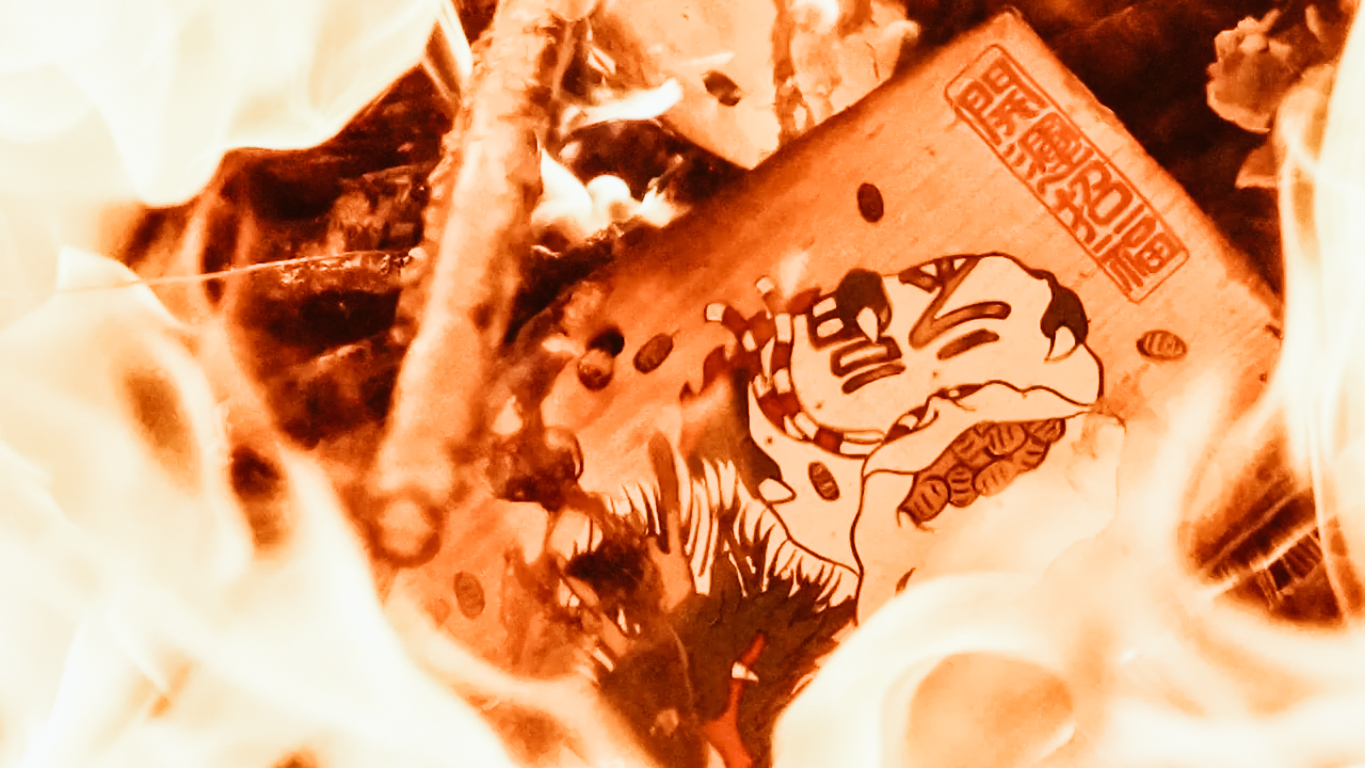
photo credits: https://youtu.be/Vn6AoThrXyc
When does this ritual take place?
The changeover to the new year is the moment that brings everyone together. However, it can also take place at other times, depending on each religious centre. Tenjin shrines, for example, usually do it at the end of October, just after the festivals dedicated to him.
The period around New Year's Eve, O-Shogatsu (お正月), is however ideal for everyone, being a time of transition. What better time to symbolically release what has now had its day, releasing the wishes and demands of the old year? And at the same time, what more propitious time to usher in the new year, perhaps by writing new ones? Boy, so many commissions for these kamis and buddhas from the very first sighs of the new year! The phrase "Getting rid of the old to make room for the new", in this context, can only fit well, lending itself more than perfectly to this dual interpretation.
Nothing rains from the sky!
.
But be careful not to misunderstand. Don't think that this is merely an act of superstition: nothing could be further from the truth! Resorting to the Ema is not the same as thinking of folding one's arms and waiting for an otherworldly grace. Those who resort to the EMA generally know, even with a hypothetical "favour from heaven", that 95% of the chances of success are given by their own commitment. And one's own mental attitude. I refer, of course, to all situations where one has power of action. In cases where this is not possible, the only thing to do is to try to act, as much as you can, on your mental attitude.
Ema tablets testify to the search for change or safety from some risk or danger. They have the power to approach even the most "secular", those who perhaps do not lead a great spiritual life. This may be the case for many young people, or for children, who may see in the tablets a playful side, as well as a support for their studies. The meaning of offering an Ema tablet is basically to cope with a crisis, of whatever nature, by resorting to the supernatural dimension, which has always been a source of support. In other words, the Ema performs a function of comfort and support. And, by extension, an important therapeutic function.
Hiroshima, a prefecture waiting to be discovered
Japan Italy Bridge promotes Japan and creates a real bridge between Japan and Italy and today we focus on Hiroshima. The Japan National Tourism Organization promotes tourism and this month focuses on Hiroshima prefecture. Let's give a more in-depth look.
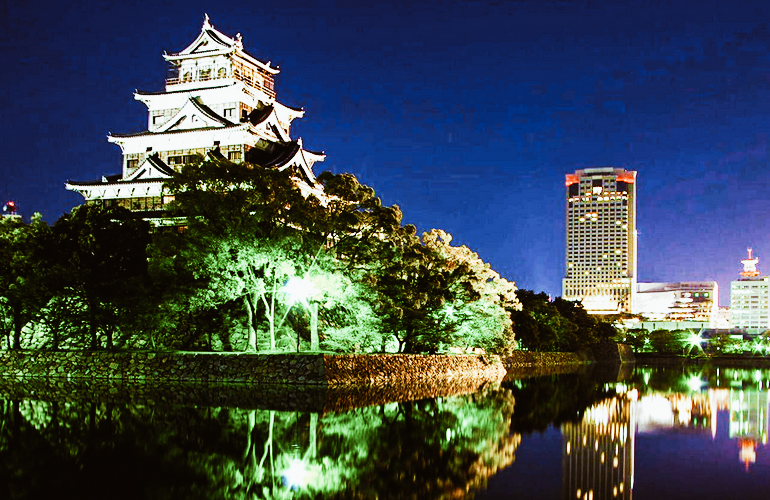
Hiroshima, a prefecture waiting to be discovered
Author: SaiKaiAngel
History

photo credits: un.org
The city of Hiroshima was founded in 1589, during the feudal period Sengoku by the Japanese daimyō Mōri Terumoto who made it the capital of his feud. After the battle of Sekigahara for territorial possessions, Terumoto had to surrender Hiroshima to the winner Tokugawa Ieyasu, who decided to have it administered by the daimyō Fukushima Masanori.
In 1871 the city became the capital of the homonymous prefecture and an important commercial and naval centre of Japan. At the end of the 19th century, Hiroshima witnessed further industrialization, which culminated with the war facilities erected during the Russian -Japanese war of 1904, and became Mazda's headquarters in 1920. In 1938 it became part of the broader war scenario of the Second World War. Unfortunately, on August 6, 1945, at 8:16 and 8 seconds, the bomb called Little Boy exploded at 576 meters, with a power equal to 12,500 tons of TNT. The nuclear explosion killed about 260,000 people and injured more than 160,000 in the months immediately following due to radiation.
The Territory
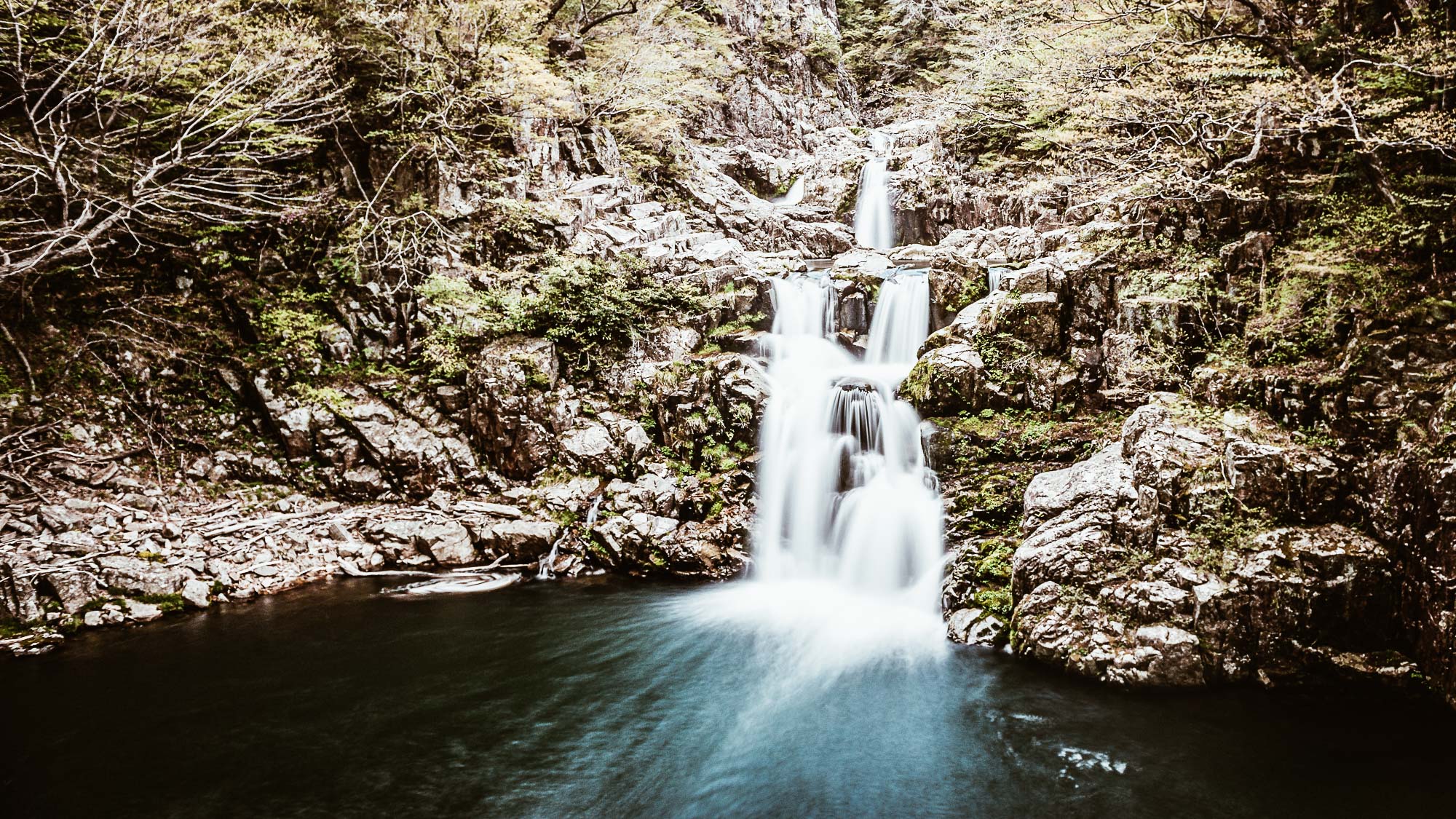
photo credits: locationscout.net
The centre lies on the harbour bay towards the sea of Aki-nada and the territory is hilly. Hiroshima has many islands such as Etajima-Nomi and Itsukushima and, inland, the territory becomes rockier with the Gosasou and Shiraki mountains as a road to the Ota River.
As JNTO also explains and assures, you can explore Japan in absolute safety! Visit Hiroshima without fear and in complete peace of mind, you will always be guaranteed the right distance, temperature detection in shops and places of interest, protection such as the mask. Do not risk anything, as the first interest of the person and the tourist there is always safety in every place.
Take advantage to visit this beautiful prefecture that gives us not only great emotions but also enchanting places that you will remember forever. Despite the tragedy caused by the explosion of the atomic bomb, Hiroshima had doubled its pre-war population in 1974 and was considered the "peace capital" of the world. Hiroshima is home to important attractions to visit absolutely, let's see them in detail.
Hiroshima Peace Memorial Park
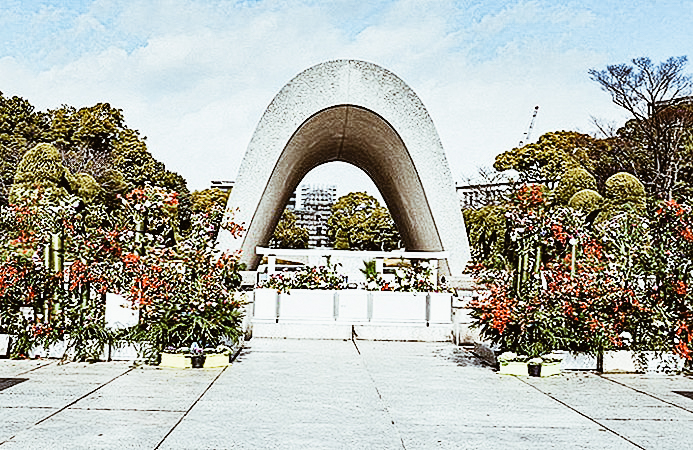
photo credits: theplanetsworld.com
Symbol of the need for eternal peace, it commemorates the numerous victims of the first nuclear attack and is located right in the epicentre of the explosion. Hiroshima Peace Memorial Park boasts many important monuments, museums related to the events of that day and its consequences. In addition to the beautiful gardens with their cherry blossoms, we find the Peace Memorial Museum, the Memorial Cenotaph, the Flame of Peace, and the Atom Bomb Dome with the ruins of the old Chamber of Industry and Commerce. A very interesting place is the Children's Peace Monument and the Monument to the victims of the Atom Bomb.
Shukkei-en Garden
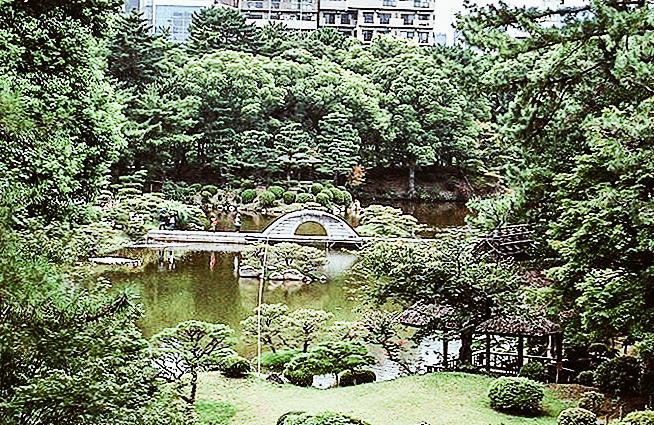
photo credits: theplanetsworld.com
The Shukkei-en Garden is a wonderful garden on the banks of the river Ōta. A space of peace and quiet desired by Asano Nagaakira in 1620. This garden was once the home of Emperor Meiji, and after the damage caused by the explosion in 1945, they literally flourished again in 1951 in all their beauty. The gardens opened to the public after being donated to the city in 1940 and, despite the heavy damage caused by the 1945 nuclear attack, the gardens reopened in all their former glory in 1951. Bridges, paths, a true landscape of calm and relaxation pampered by the sound of streams that draw from the river Ōta.
Hiroshima Peace Memorial Museum
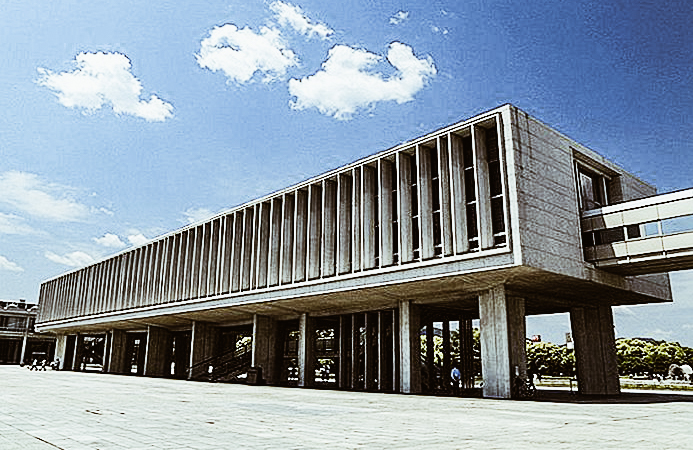
photo credits: theplanetsworld.com
The exhibitions focused on the explosion of the atomic bomb of the Peace Memorial Museum are very hard and very painful and are exhibited together with exhibitions that extol world peace. This museum is one of the sites that cannot be missed during your trip to Japan, both to experience the rebirth of a prefecture and to pay homage to those who lost their lives during the terrible bombing.
Hiroshima Castle

photo credits: theplanetsworld.com
The Castle of Hiroshima (Rijō), also known as Carp Castle, was the residence of Fukushima Masanori and then passed into the possession of the famous Asano Nagaakira in 1619. In the castle and in particular, in the tower, there is a museum about the history of the castle with images of Hiroshima. In the castle, we can also find three trees that survived the atomic bomb and a bunker used for radio transmissions after the explosion.
Itsukushima island sanctuary
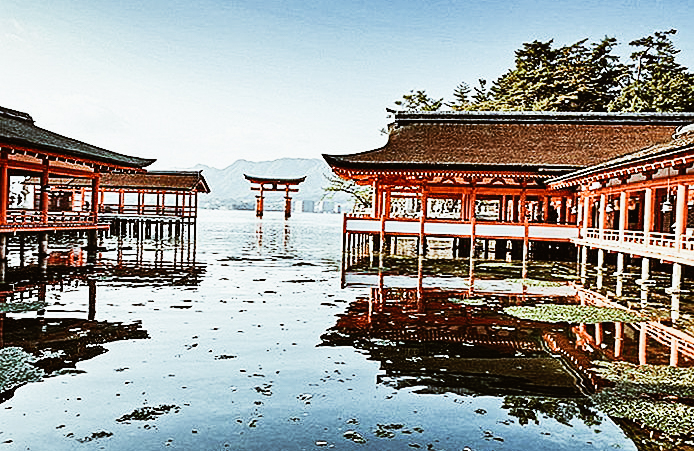
photo credits: theplanetsworld.com
Miyajima, the Sanctuary Island, is famous for the sanctuary of Itsukushima, dedicated to the princesses Ichikishimahime, Tagorihime and Tagitsu-hime, daughters of the wind god Susanoo. The buildings with the high tide, seem to float magically on the water because they are located on a bay supported by stilts. The show is not to be missed, a feast of colours, red wooden structures and white walls. Honden (Main Hall), Heiden (the offering hall). Haiden (the prayer hall), Senjokaku (the Hall of a Thousand Carpets) and Takabutai used for the Bugaku and Kagura dances are the places you cannot miss during your visit to Hiroshima.
Memorial Cathedral for World Peace
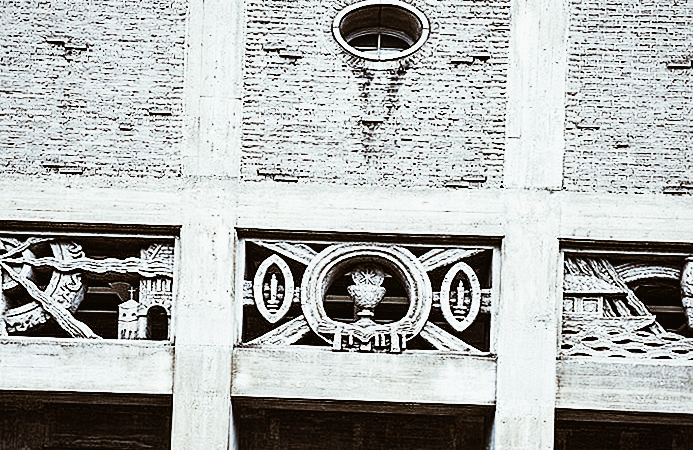
photo credits: theplanetsworld.com
The Memorial Cathedral is one of the largest churches in Asia, built in 1954 by German Jesuit priest Hugo Lassalle from a design by Japanese architect Murano Tohgo. The Memorial Cathedral has four bells in the 46-meter tower, an organ provided by the city of Cologne and the bronze doors of Düsseldorf.
The Mitaki-dera temple

photo credits: theplanetsworld.com
One of the most beautiful temples in Hiroshima is Mitaki-dera. Built in 809 and rebuilt after the war, it is also famous for its beautiful gardens, which in autumn give a fiery red show to visitors. Also known as the Temple of the Three Falls for its location at the foot of Mount Mitaki, the temple is famous for its red lacquer pagoda, Tahoto and waterfalls.
Fudoin Temple

photo credits: japanvisitor.com
Another beautiful place to visit is the Temple of Fudoin, the architecture of the Muromachi period between the 14th and 16th century with a large main hall containing a carved statue designated as a national treasure.
Hiroshima museums
The city of Hiroshima and the whole prefecture are also famous for the many museums in the area. Below are the ones that we believe are unmissable on your trip to Hiroshima.
Hiroshima Prefectural Art Museum (Hiroshima Kenritsu Bijutsukan)
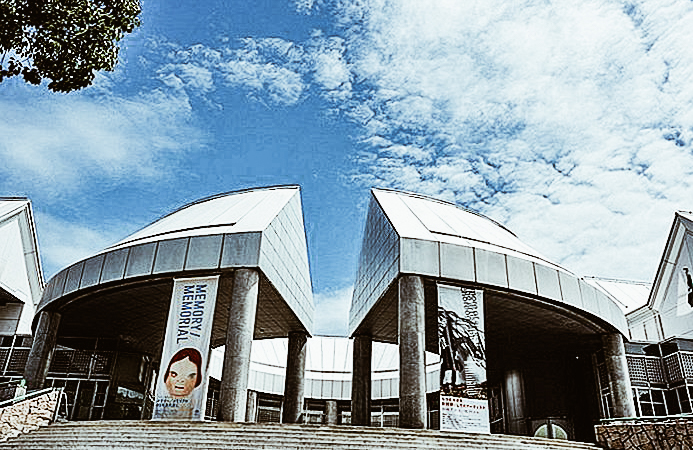
photo credits: theplanetsworld.com
This Museum, opened in 1968, focuses on local artists with collections related to the atomic bombardment and a children's gallery.
Hiroshima Museum of Art
The Hiroshima Museum of Art consists of eight world-class art galleries. We can find the collection of paintings by European masters such as Monet, Renoir, Degas, Maillol and Picasso together with leading Japanese artists such as Ryohei Koiso and Yuzo Saeki.
Hiroshima City Asa Zoological Park
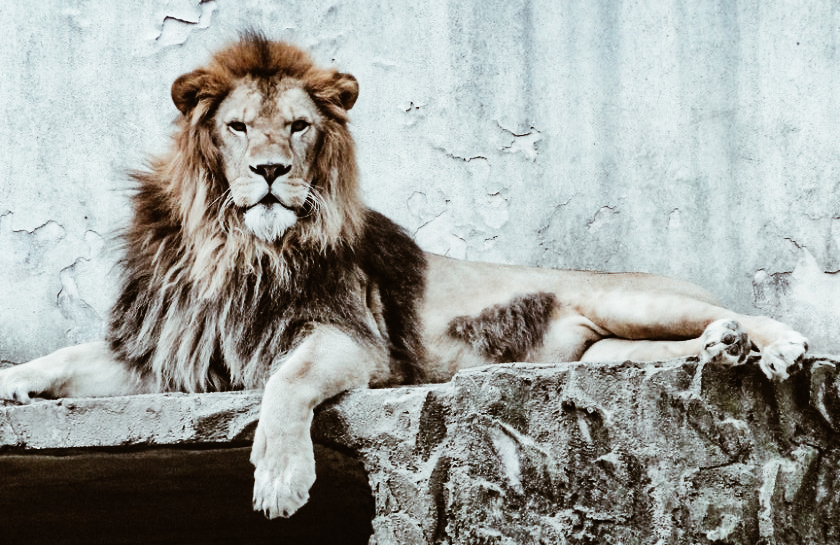
photo credits: japantravel.com
Opened in 1971, the Asa Zoological Park is about 124 hectares large and is home to 170 species of animals, like minor pandas, Japanese giant salamanders, lions, giraffes and rhinos. A place to distract yourself from the other important places in Hiroshima and to entertain the mind, not only for children but also for adults!
Food and beverage
Obviously, with such an interesting trip, we can't forget to eat and drink and that's why Hiroshima gives us unique experiences here too! Not to be forgotten are five famous Sakaguras from Hiroshima thanks to which we can enjoy exceptional sake. Read carefully here for a unique experience in the Japanese tradition.
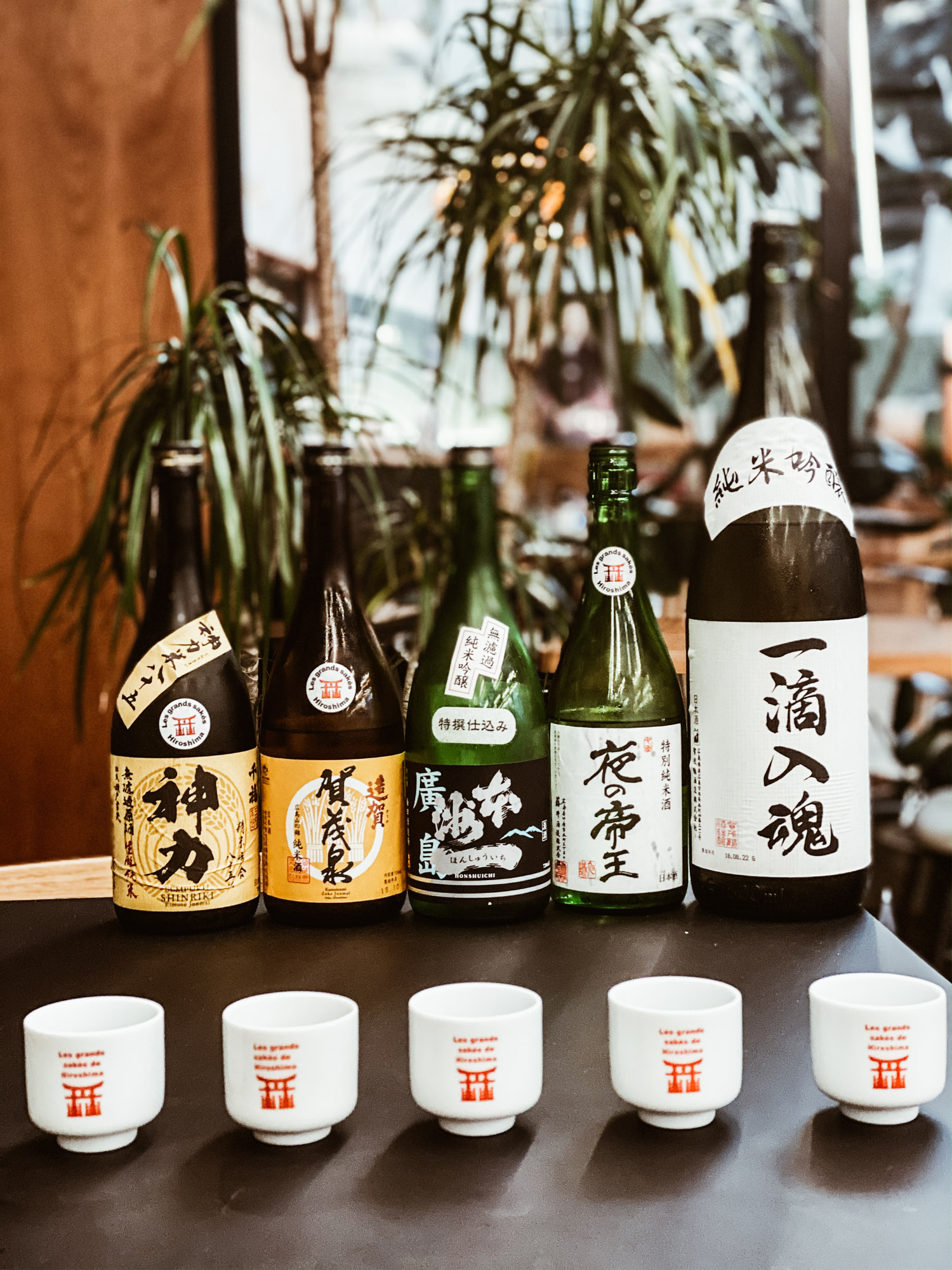
Honshu ichi - Brasserie UmedaCo., Ltd.
Category】Junmai Ginjo
【Ingredients】Rice, Koji rice (Senbon Nishiki / Hiroshima product)
【Polishing ratio】60%
【Alcohol content】 16.8 °
【Glucose density】 1.8
【Acidity】1.7
【Sake Gradation】 +5
【Aroma】Sweet fruity aroma
【Pairing】Fish in general, chicken, sweets with strong flavour such as cheesecake
【Features】
A Junmai Ginjo Sake produced by Hiroshima Prefecture, preparing "Senbon Nishiki" rice with Hiroshima Ginjo yeast. It is characterized by the fruity aroma of Ginjo sake, slightly sweet taste. It can be enjoyed with fish and cheese dishes.
‘Zoka’ - Kamoizumi Shuzo Co., Ltd. 創業 1912年 founded in 1912
【Category】Junmai
【Ingredients】Rice, Koji, Water (Rice: Yamadanishiki/100% Higashiroshima )
【Polishing ratio】65%
【Alcohol content】16°
【Glucose density】2.0%
【Acidity】1.8
【Sake Gradation】±0
【Aroma】Sweet chestnut, with a strong smell of rice and wheat.
【Pairing】Boiled tofu, sweet with citrus fruits, marinated food.
【Features】
Junmai Daiginjo is made from "Yamada Nishiki" sake rice grown in a field located about 6 km north of the brewery, using Saijo underground water and the Hiroshima Mori technique. The delicate aroma and sweetness of the transparent and gentle rice harmonize perfectly with the fresh acidity. You can enjoy it cooled with a thin cup or glass of wine. Sake certified with Saijo JAPAN brand)
Itteki Nyukon - KamotsuruCo., Ltd.
【Category】Junmai Ginjoshu
【Ingredients】Rice, Koji rice(100% Hiroshima rice)
【Polishing ratio】60%
【Alcohol Gradation】15 - 16 °
【Glucose density】1.0
【Acidity】1.6
【Sake Gradation】+3
【Sweet】Aroma
【Pairing】Sauté of chicken, Gelée of white peaches
【Features】
This sake has as first material the rice suitable for its preparation. A slightly dry Junmai Ginjo sake that goes well with foods with the right acidity, good both cold and hot.
Sempuku Shinriki 【Nickname】Filled with happiness - Brasserie MiyakeCo., Ltd. Sempuku Shinriki
【Category】Saké Daiginjo
【Ingredients】Rice, Koji (Shinriki) rice
【Polishing ratio】 85%
【Alcohol content】 19.0 °
【Glucose density】 1.2
【Acidity】2.3
【Sake Gradation】 +5
【Aroma】Mature aroma, almond
【Pairing】Sukiyaki, Steak, Cheese, Chocolate
【Features】
Kamiriki rice, which is the origin of Chifuku, is 85% processed and is close to the processing speed of rice from the Meiji and Taisho eras. A bottle full of feelings for the preparation of sake, especially suitable for people who particularly care about Japanese sake.
Night Emperor - Fuji Shuzo
【Category】Junmai
【Ingredients】Rice, Hattan Nishiki Koji, Water
【Polishing ratio】65%
【Alcohol content】 15 °
【Glucose density】N/A
【Acidity】1.6
【Aroma】Moscato, walnuts
【Sake Gradation】 +9
【Pairing】Tartare, Lemon Grilled Chicken
【Features】
Night Emperor is a mixed Hachitan Nishiki based liqueur produced in Hiroshima Prefecture. This versatile liqueur is easy to combine with any dish. Soft taste that takes advantage of the characteristics of fresh water preparation and keeps the alcohol content low while maintaining the taste of koji and rice. Good tasted both cold and hot.
We have given you some examples and information that will surely push you to live the Hiroshima experience, but there is even more! Hiroshima prefecture is a treasure chest full of treasures just waiting to be explored by you! What are you waiting for? We at Japan Italy Bridge do not make us repeat it twice, it will be a joy both for the eyes and for the palate and the heart and soul. We will all come out of it enriched!
Okinawa and The case of the over centenarians
The Japan Italy Bridge column continues to promote in-depth studies related to the world of Japan, today we are talking about Okinawa and the case of the over one hundred-year-old population.
"At 70 you are only a child. At 80 you are a young man. At 90, if your ancestors call you to heaven, ask them to wait until you are 100 years old. Then you can think about it". So says an ancient saying in Okinawa, unfailingly quoted every time you get ready to talk about its mythical inhabitants. Words that seem to find confirmation, even in ancient legends that would speak of this place as a "Land of the immortals".
Okinawa 沖縄 The case of the over centenarians
Guest Author: Flavia
A few years ago even the show "Le Iene" brought the case of Okinawa to prime time, giving us a very nice report. The longevity of its inhabitants and even more so the incredible quality of their ageing is immediately witnessed by the first two ladies who appear in the tv show. I think that whoever saw them was amazed: I don't lie if I say that they show something like 15 years less! Unbelievable. As noted by the journalist Nadia Toffa, sent by the tv show in question, we also have them here in Italy. So the point is, how do you get to those ages. That is: with what quality of life? Usually, the pains of our elderly people, as we know, are such as to affect the quality of their last journey of life. As a society, it is now accepted that illness and loss of autonomy are what is hopelessly awaiting us when we cross those age thresholds. Well, the case of Okinawa's (super-) grandparents shows us that things don't have to be like that! And that it is in everyone's power to ensure psycho-physical well-being during, starting from ... as soon as possible! The sooner you start to treat yourself, the better you can prepare for your old age.
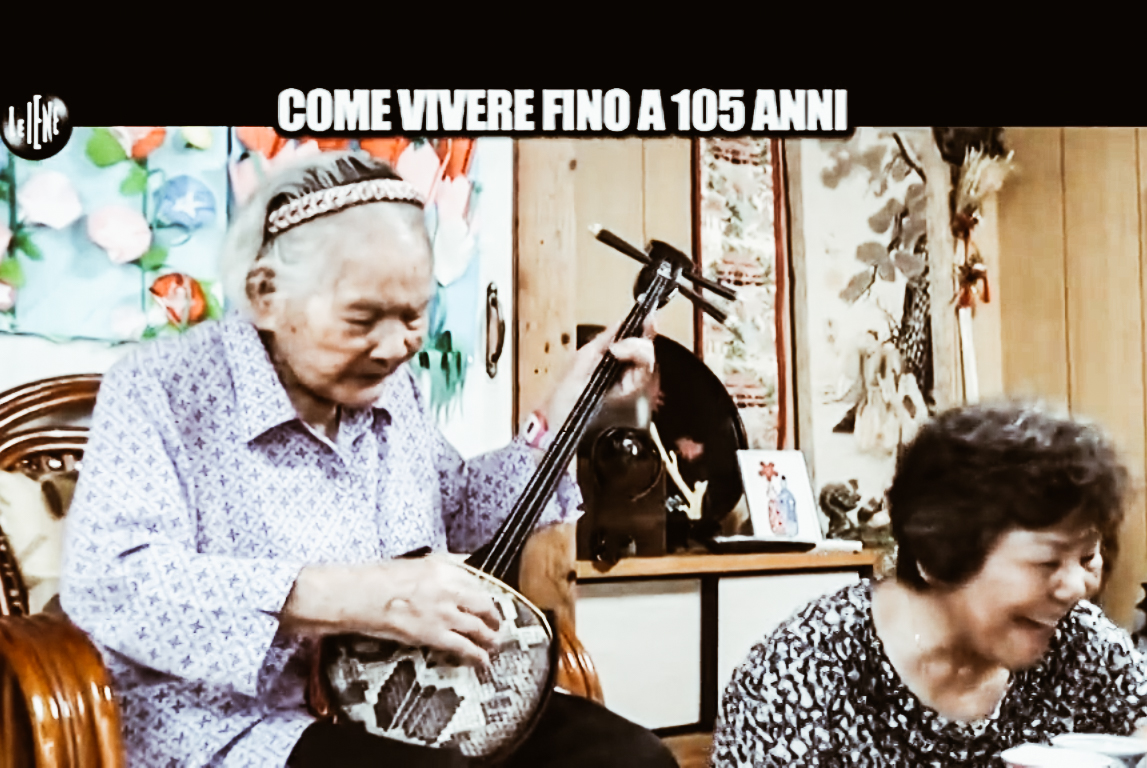
photo credits: mediaset.it
The typical ailments of our western societies - which often even young people(!) like to experience - Okinawa's elders almost don't know what they are. The incidence of diseases related to senility or degenerative diseases such as osteoporosis, Alzheimer's disease, sclerosis, cancer... is very low.
Okinawa: blue zone, paradise of longevity
These people have an extraordinary quality of life own on this island. We are talking about people who have never been to the hospital, who have never taken medication... who are even able to continue working or driving their car beyond the age of 90/95. Who in any case have a margin of autonomy unthinkable for a local elderly person, except in sporadic cases. Among them, the small village of Ōgimi stands out for the high concentration of centenarians compared to the total number of inhabitants. In reality, a case of similar longevity is present, you will know, also in our house: in the nearby Sardinia. Not by chance: Okinawa, Sardinia, the Greek island Ikaria, the Costa Rican Nicoya and a small community near Loma Linda in California, all fall under the name of "blue zone".
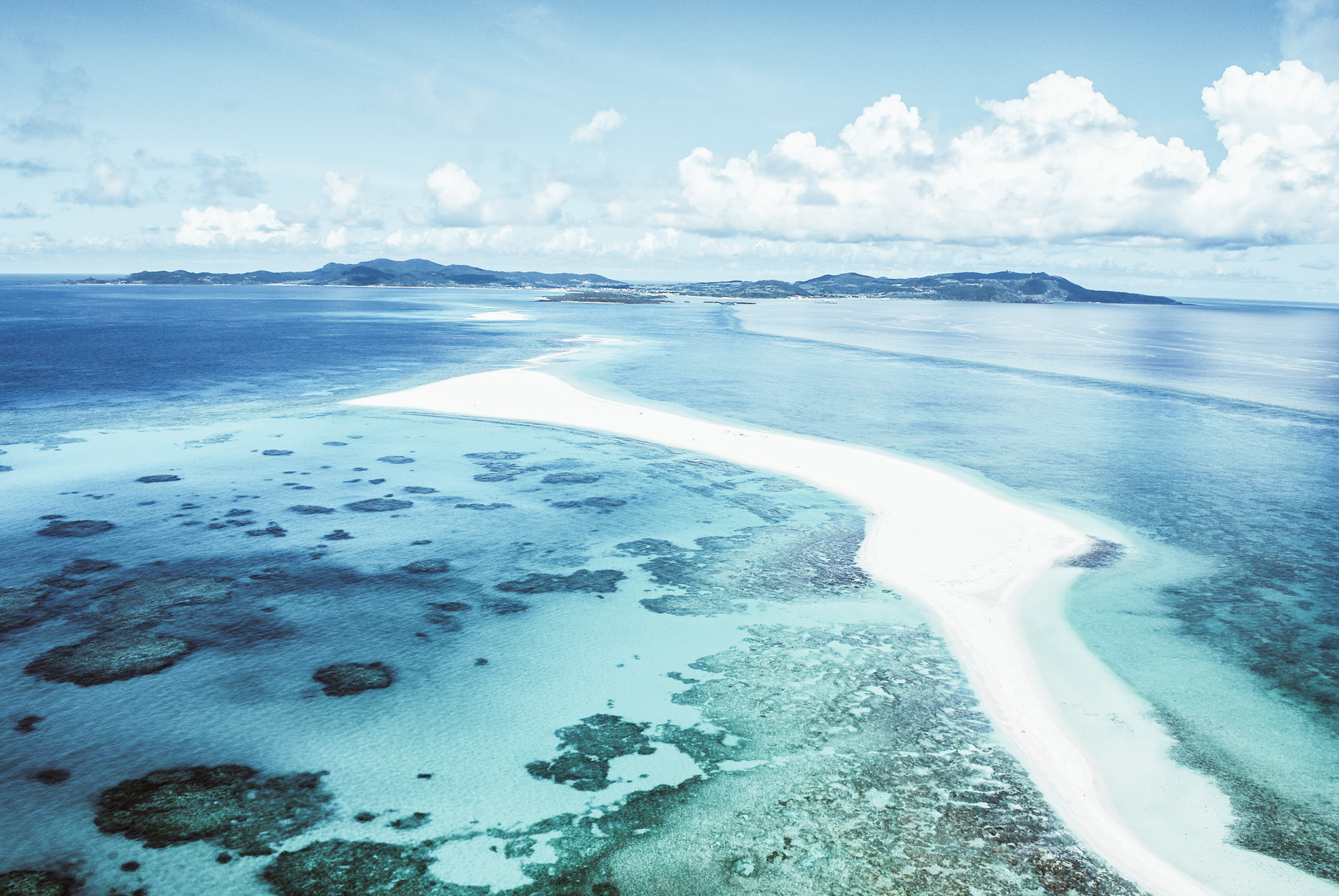
photo credits: ilviaggio.biz
Any area in the world where life expectancy is higher than the general average is called the "Blue Zone". Real "paradises of longevity" that attract researchers from all over the world to try to capture the "secret" of their populations. In this sense, Okinawa and its inhabitants even surpass even mainland Japan, which does not lag behind in terms of quality of life, but has a higher incidence of disease, for example.
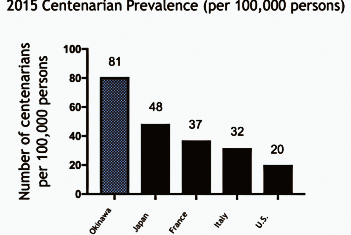 photo credits: orcls.org
photo credits: orcls.org
But who are the Okinawans? Let's first find out who we're dealing with.
Identikit of the Japanese "tropics"
Okinawa is the main complex ( 沖縄諸島 Okinawa-Shotō ) of the Ryūkyū archipelago and is located between "mainland" Japan and Taiwan. It consists of a main island of the same name plus other smaller islands. Naha ( 那覇 ), is its capital. It was named prefecture of Japan in 1879 although the Ryūkyū complex ( 琉球諸島 Ryūkyū -Shotō ), which incorporated it, was formally annexed in 1874. At that time Japan was in the process of modernization and this was matched by a process of unification of all the territories of the archipelago under a single flag.

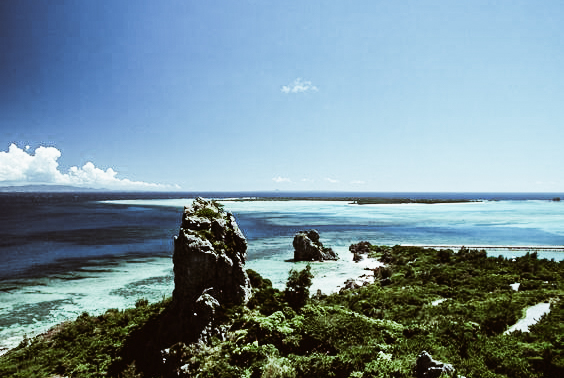
photo credits: lacooltura.com, pinterest.it.
Before 1874 Ryūkyū was an autonomous kingdom, whose foundation in the 15th century led to the unification of the islands of Okinawa. Formally it was recognized by the Tokugawa - lords of Japan until 1868 - under the jurisdiction of the fief of Satsuma (today Kagoshima Prefecture). In fact, however, it was independent, so much so that it was the fiscal kingdom of both Japan Tokugawa and, even before that, China.
Okinawa is a rather peculiar region, more in its own right than the rest of Japan. It is influenced by China and South-East Asia, due to the frequent trade and cultural exchanges maintained by the Ryūkyan Kingdom over the centuries. Okinawa cuisine itself and Karate, the made-in-Okinawa martial art par excellence, are the result of such interactions.
The lush nature of these islands, made up of numerous coral reefs and extensive rainforests, together with a sub-tropical climate, makes Okinawa a true paradise. It is not uncommon to find it referred to under expressions such as "tropical corner" or "Caribbean" of Japan. A climate that is somewhat reminiscent of that of the blue zones of Sardinia and Ikaria, which are also islands. I am not surprised that paradises like these can host "elixirs" of long life.
But let's see what researchers' discoveries tell us about Okinawa's elixir.
The ORCLS researchers' studies
The Okinawa Centenarian Study (OCS), is the longest centenarian study currently in existence. It is conducted by the Okinawa Research Center for Longevity Science (ORCLS) research team, which has been reviewing various aspects of local life since 1975. Among these, social, psychological and spiritual aspects are also given high consideration. Professor Craig Willcox, interviewed in the service by the Hyenas, is one of the leading researchers. Willcox tells the Hyenas' cameras about the discoveries his team has made over the years. First of all, the presence of a particular gene, FOXO3, readily christened the "longevity gene", was observed. However, the researchers found that longevity and longevity quality are inversely proportional to a number of health risk factors that were present before the age of 50. That is, the chances of reaching at least 85 years of age in good health increase if there are no more than 7 risk factors before middle age. Conversely, with more than 7 factors, Willcox tells us that the odds can be as high as 0%.
And here are the risk factors:
- Hyperglycemia (with risk of diabetes)
- Hypertension (with risk of heart attack or stroke)
- Excessive alcohol consumption
- Low level of education (education would foster a greater awareness of what it means to have a healthy lifestyle)
- Being overweight
- Poor diet (lack of vitamins, proteins, mineral salts)
- High triglycerides (with risk, for example, of arteriosclerosis)
- Low gripping force in the hands
- Smoking
- Only for men: don't be married!
The latter is quite curious, as Toffa immediately notes in his interview. Willcox motivates him as follows: "women are much better [at taking care of themselves] they don't need men, they can survive without them". This is why having a woman at your side would increase the life expectancy of the average man. However things may be, if we think that historically Okinawa women play a key role in Okinawa society, this could take on a wider meaning. And good Okinawan women!
Not only Okinawa DNA
But the research does not end there. Willcox says he and his team examined a sample of 8000 men with Japanese ancestors in their genealogy. Considering the two analysis variables, presence of the FOXO3 gene (1) and healthy lifestyle (2), they divided the subjects into 4 groups. Well: the individuals who possess the gene linked to longevity, however, have an incorrect diet, live less than those who, although not genetically predisposed, maintain a healthy diet. This clearly shows us - as Willcox says - the power that a healthy diet and lifestyle have on the physical health of individuals.

photo credits: mediaset.it
Another thing observed is that the Okinawan population does not consume more than 1100 calories per day. This is 10% less than the calories usually indicated by each nutritional table. In particular, their habit of "nibbling rather than bingeing," Willcox always explains, "is key. But a snack made from healthy food: snacks, for example, are made from dried fruit or dried fish (a snack that is also common in mainland Japan). All this in conjunction with a broader, healthier lifestyle.
Shall we find out in detail what all this consists of? Let's start with eating habits.
#1 Traditional diet
Two, are basically the principles underlying the Okinawan diet and concern quantity and quality of food.
腹八分 (Hara-Hachi-Bu): " stomach [full] for 8 parts"
That's 8 parts out of 10: "Always leave some space in your stomach...that is, eat until you are 70-80% full" explains Willcox. A guideline, it would seem, of Confucian origin, which seeks moderation rather than satiety: never fill up completely but eat what is strictly necessary. And in fact, the second elder tells journalist Toffa: "I eat what is right but never fill myself completely. I always get up with a bit of hunger".
The Okinawans are used to eat 5 meals a day (which is also recommended by local doctors), opting for low-calorie but satiating foods. Let's keep in mind the setting of the table, which is typical of Japanese cuisine. The contemporaneity of the dishes, through their arrangement in saucers and bowls, is a factor that certainly predisposes more to "small tastings" than to binge.

photo credits: travelbook.co.jp
I-Shoku-Dō-Gen ( 医食同源 ), "food and medicine, same origin", from Okinawa
For the local elderly, there is nothing healthier than lovingly caring for the garden and then feeding on the fruits of the earth. If we add marine food to these, we have our own miracle diet. This is what it is made up of:
- Greens. Especially with green leaves, yellow roots and orange roots, all containing carotenoids and anti-inflammatory agents.
- Tubers like the sweet purple potato of Chinese origin, with a very low glycemic index. Eugenio Iorio, an Italian researcher, explains: "it is there [in the purple] that these famous polyphenols [...] dialogue with our DNA and therefore help us to control the effect of free radicals";
- Legumes. Like soya beans (with protein and fibre but without fat) and soya derivatives;
- Algae, natural anti-inflammatory, ideal for free radicals and also for hair;
- Fish and the already mentioned dried fish, rich in magnesium and omega 3;
- Tea. Especially green tea and jasmine tea, anti-ageing;
- Herbs to chew like Sakuna, "herb-elixir" slimming and antioxidant;
- Fruits. Among which bitter melon Goya, used in the typical dish "Goya Champuru" and citrus Shikuwasa, anti-inflammatory, both typical of the place.
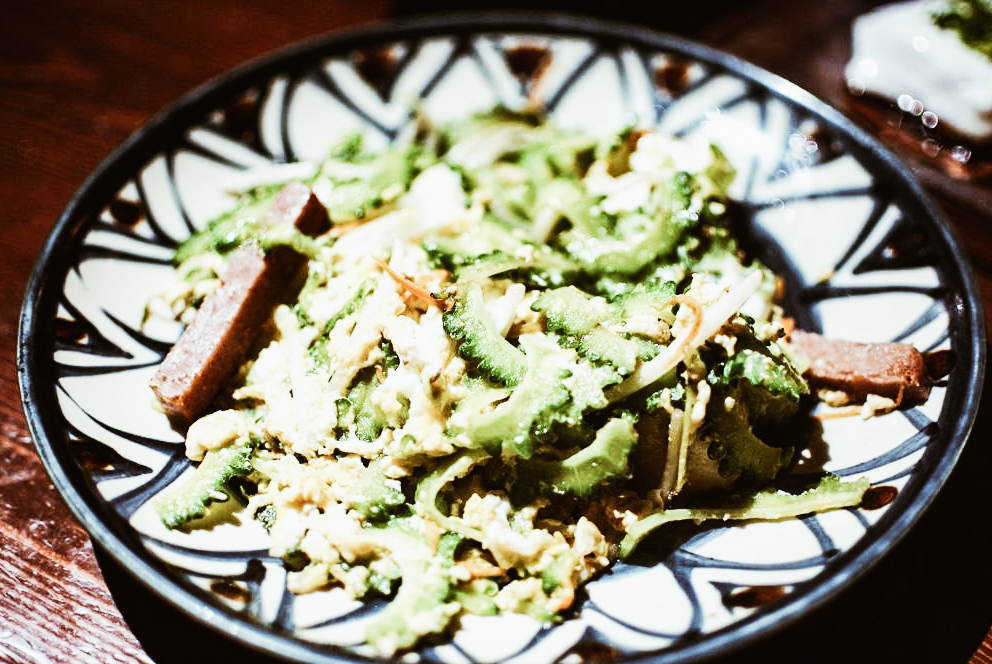

photo credits: ohayo.it
"Eating like a rainbow"
In the words of Dr Willcox, by virtue of the parade of colours that the great variety of fruit and vegetables brings to the tables of Okinawa. Variety. Another watchword in the agenda of the Okinawans who would use at least 18 foods daily. The important thing, however, is always to respect the seasonality of the fruit and vegetables. In this way, the maximum nutritional potential of the fruit and vegetables can be realised. And of course, the freshness of the food. It is also important if you decide to cook them, especially when it comes to fish and vegetables: never overcook them if you want to preserve the nutrients!
In addition to very low consumption of carbohydrates, salt and sugar are also used very little. Yes to spices, such as turmeric, and mushrooms.
What about meat?
As a result of that Chinese influence mentioned at the beginning, meat consumption is also well established in Okinawa's cuisine. But meat, as well as dairy products and cereals, are categories with a high nutritional density...so they are consumed in even smaller quantities! Even rice is eaten less than the rest of Japan and quinoa is often preferred to rice. We speak of a low-calorie diet also for this reason; because it counterbalances with smaller quantities of nutritional contributions otherwise potentially excessive. Also because vegetable and marine foods and fruit remain the true carriers of all those beneficial substances that make up the food elixir of Okinawa.
#2 Motor and mental activity
"When the body moves, the brain goes into rhythm" - this is the motto of Jim Kwik, an internationally renowned trainer who deals with fast learning. Kwik always urges even those who have to spend their days sitting down for work or study not to stay in the chair all the time but to take breaks and move around. Even just a few minutes of simple movements between breaks, as well as drinking water and making small snacks, are enough. In doing so, Kwik suggests, our performance is even better, because the brain works better if we treat ourselves this way. Exercise as a stimulator of neurogenesis and neuroplasticity: facilitates the creation of new neural connections. In short, physical movement is also a gym for the brain! That comes out strengthened. And if the brain is active the whole organism benefits. It is a vicious, beneficial circle that, when activated, becomes self-feeding. And this is also the basis for all the nutritional discourse that has just been made, as well as the other factors that we will see in a moment. Let us bear in mind that this discourse is not compartmentalised: everything is connected.
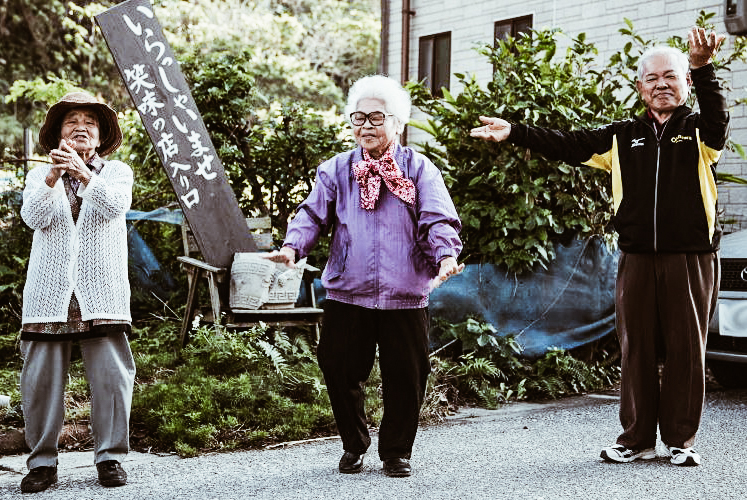
photo credits: okinawa.stripes.com
Observing the lives of our Okinawans, we find that, in their own way, they put into practice very similar things to those promoted by Mr. Kwik. The second reason for their well-being lies in the fact that they are active, not only in their body but also in their mind! The grandfather we see in the hyena service, for example, reads the newspaper every day when he returns from his morning walk. And watch out, 100 years go by, he does so without the help of glasses. Not to mention the fact that he worked in the countryside until he was 97 years old!
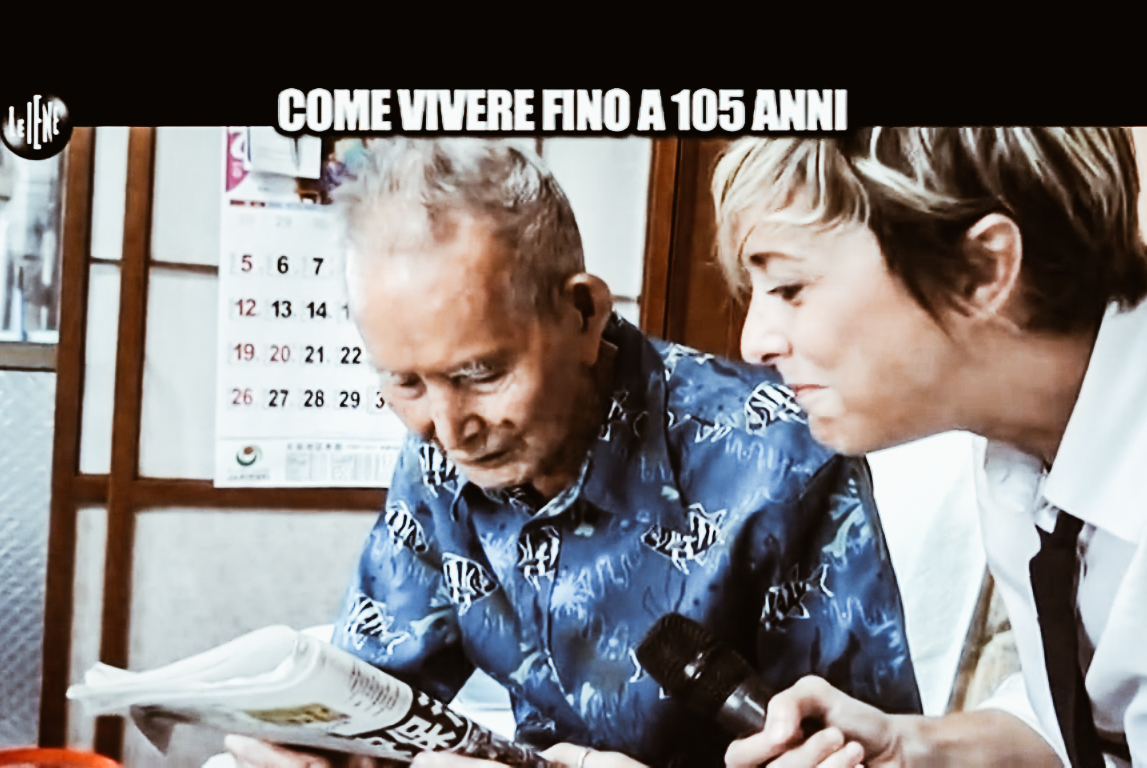
photo credits: mediaset.it
Among the activities most loved by Okinawa's grandparents - in addition to the garden, as already mentioned - we find traditional dance or dabbling with some traditional musical instrument. Or, martial arts, ideal for the body-mind-spirit system, as in the case of master Seikichi Uehara. Uehara, a few years before his death at the age of 100, still taught Karate to his students. Or again: how not to mention the weaver Toshiko Taira who, at the age of 100, continues to work as a weaver of Bashōfu, an ancient fabric used for the Kimono (produced only at Ōgimi).
#3 Interior and exterior attitude
But it's not just a question of genes and nutrition. Turn that turns you back, you always come back there: the mind (and the spirit, which in the Japanese vision is one with the mind - as the parola心 "Kokoro" or heart/mind) testifies. Once again, the vision of things proves to be decisive. The most cynical ones will be tired of always hearing "the same old tune", I know; but instead of automatically throwing it on scepticism, I would start to give more credit to the "power of the mind". There will be a reason for this if it is invoked from many quarters. Those who have somehow experienced the beneficial influences of a clean mindset, from excessively... interpretative distortions of reality, let's put it this way.
The perception of the world and therefore of oneself has the power to affect the tangible world of people. Let's think about psychosomatic illnesses for example...or even just inner dialogue: thoughts or words directed towards something can influence this something, including ourselves.
Thus, even Okinawan scholars recognise optimism as a not inconsiderable factor, as well as more tangible factors. Optimism, attention, understood not as pretending that the challenges in life do not exist...but as a different way of accepting both the good and the bad. An openness towards life, which avoids complaining and the negative vision of things. A serenity given by knowing one's own soul and place in the world, with a consequent trust in life and in others. From giving the benefit of the possibility, to everything and everyone.
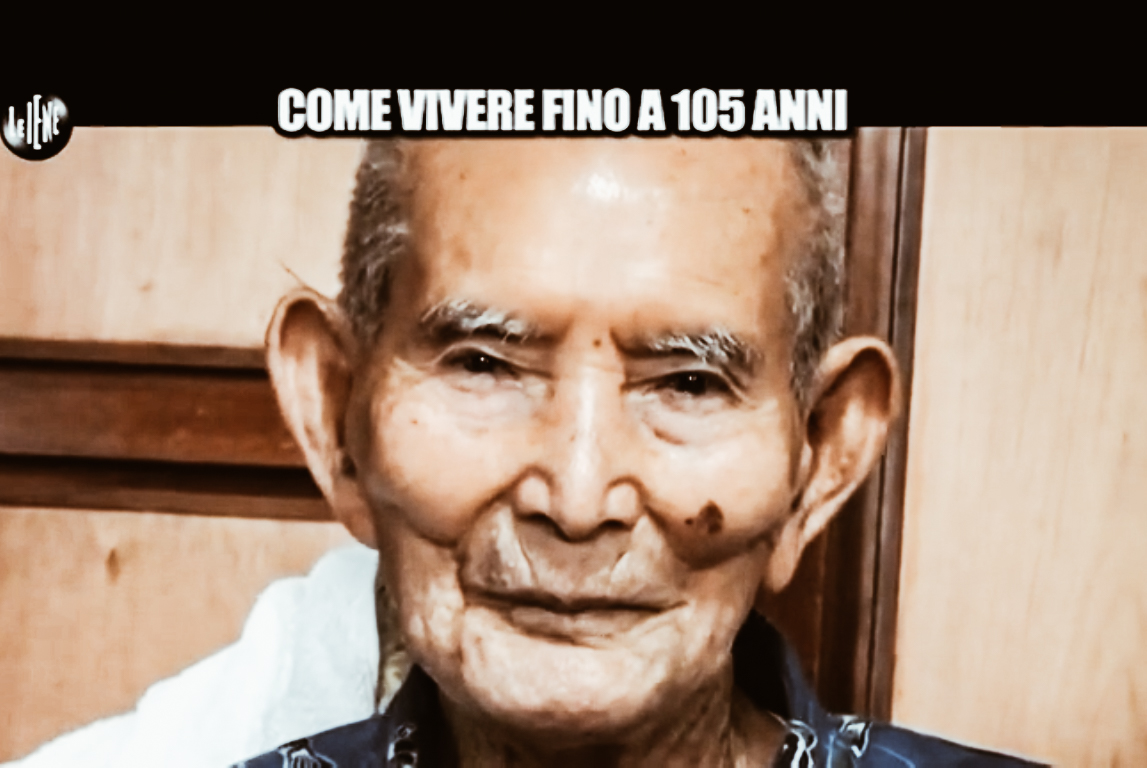
photo credits: mediaset.it
#4 Interpersonal relationships and social life
When this happens, the mind/spirit "machine" works properly and you feel better at 360 degrees. Even in the seemingly obvious little things that have their own importance, such as simple but authentic moments of conviviality. People in Okinawa generally have a very healthy social life, based on trust and balanced communication. It is often overlooked, precisely because it may seem like "the usual rhetoric", but, believe me, communication is essential to maintain healthy and satisfying human relationships. When people manage to have sincere, spontaneous, and serene communication - without any quarrels of any kind - the relationships are perfectly balanced. Without balanced and satisfying human relationships, the life of a human being is not the same. Just as moments of healthy solitude are essential, to rebalance oneself and recover one's energies, so, at a certain point, are human relationships. But be careful: they must be healthy and balanced. Just like those of our Okinawans.
The deep sense of belonging to the community that characterises their network of relationships and the value attributed to the elderly creates a buffer effect on the elderly that gives them confidence. With a community ready to support them, grandparents can thus live freely and still feel useful. Would you have me believe that the love and trust surrounding these people do not contribute to their quality of life?
#5 Spirituality
And all this takes us towards the last factor that remains for us to consider: spirituality. It "ferries us" because an approach to life like the one we have seen, from that part of the world, goes hand in hand with a certain kind of spiritual sensitivity. These two things are intimately linked if we think about it, and it could not be otherwise.
The philosophy of finding one's own reason to live, what gives it meaning, is from Okinawa, the famous Ikigai ( 生き甲斐 ). If this is missing, there is no healthy diet or strong genes to keep, for a long and quality life. Even the saying "Nan kuru nai sa ( なんくるないさ )" that is "Don't worry [it's all right] " is made in Okinawa. It indicates the profound belief that everything that happens in life has its own intrinsic meaning and that it serves us, for our growth. Having said that, everyone can and should do everything in his or her power in the situations that life confronts him or her with. If this is done, then the motto says to us "you have nothing to fear: everything you could do you have done, so it is all right, be at peace. Everything is as it should be".
Prayer and meditation, also beneficial against stress, are very present in the life of the Okinawans. In the morning, for example, they gather in front of an altar traditionally present in their homes to commemorate and thank their ancestors. This aspect of thanksgiving is something very important that potentially has an impact on the mentality and one's own worldview. And the same care of the vegetable garden already invoked higher up or even eating calmly (devoting all the attention to the act itself, without dispersing it with the TV, for example), is in truth in itself, already meditation.
Nature and environment
A spirituality in any case always close to nature...that recognizes the soul. Could it be that it is precisely the sharing with nature that has inspired these people over time to the right behaviour for a beneficial lifestyle? Although this specific aspect is difficult to quantify with empirical data, I believe so. Also because, if we take for granted that mentality and worldview can have power over our lives... why then discard a priori the power of the "spirit of nature"? Just like animals (think of pet-therapy), so can nature.
The spiritual is very present all over Japan but in Okinawa, it can count on a more uncontaminated nature, at least, compared to other places in the world. Let's remember that the increase in free radicals - potentially responsible for cancer - is also favoured by pollution as well as by bad behaviour. In order to link up with what we said at the beginning when we were thinking about the other blue areas, even the environmental factor - the ecosystem - has its own weight.
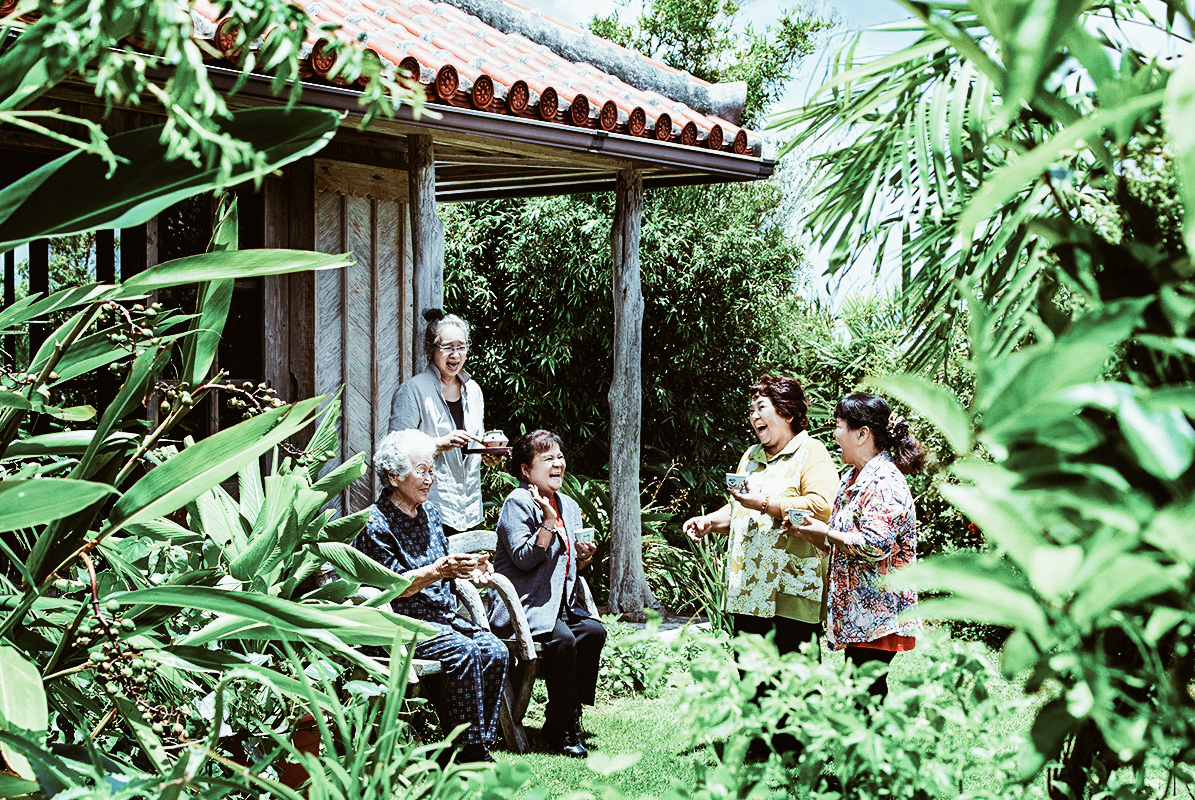
photo credits: visitokinawa.jp
The power of the Okinawa lifestyle
And so, alongside: healthy and balanced nutrition; the balanced activity of body and brain; a good relationship with life and consequently with others, here we have the spiritual dimension. But again, there is no hierarchy between these factors: just like the courses of the Japanese tables, they are all contemporary. Each one depends on the other and each influences the other. Of course, you will say, there is always a genetic predisposition. But while genes are not chosen, all these factors are in the hands of individuals. They are in their power. Good genes are undoubtedly a plus. However, as widely observed in OCS research, an individual with a healthy lifestyle lives better and for a long time, even without such a gene. While its effectiveness can also be cancelled out by the lack of just one of the other factors. This is already being demonstrated by the new generations of Okinawa. In fact, the young people of the area are at risk of losing the health benefits of their grandparents by becoming westernized between sedentariness and technology, consumption of pre-packaged food full of colourings.
Even in Italy, it is possible to have the same nutritional benefits as the Okinawa diet. After all, our Mediterranean diet, as Eugenio Iorio also tells us, is based on the same principles. Therefore, we also have the same food supplies in our lands and in our sea. We also talk about "MediterrAsian diet" if we try to integrate the two nutritional models. On the other hand, the Okinawa lifestyle and the Sardinian and Ikarian styles have some aspects in common: high consumption of vegetables and legumes, active and especially outdoor life, and finally, social life and strong family ties.
Jidai Matsuri
The Jidai Matsuri ( 時代祭り, literally "The Festival of Historical Epochs"), celebrated in Kyoto on October 22 of each year. This festival represents a magnificent opportunity to experience over a thousand years of Japanese feudal history as direct spectators in a single day.
Jidai Matsuri, the Festival of Historical Epochs
Guest Author: Myriam
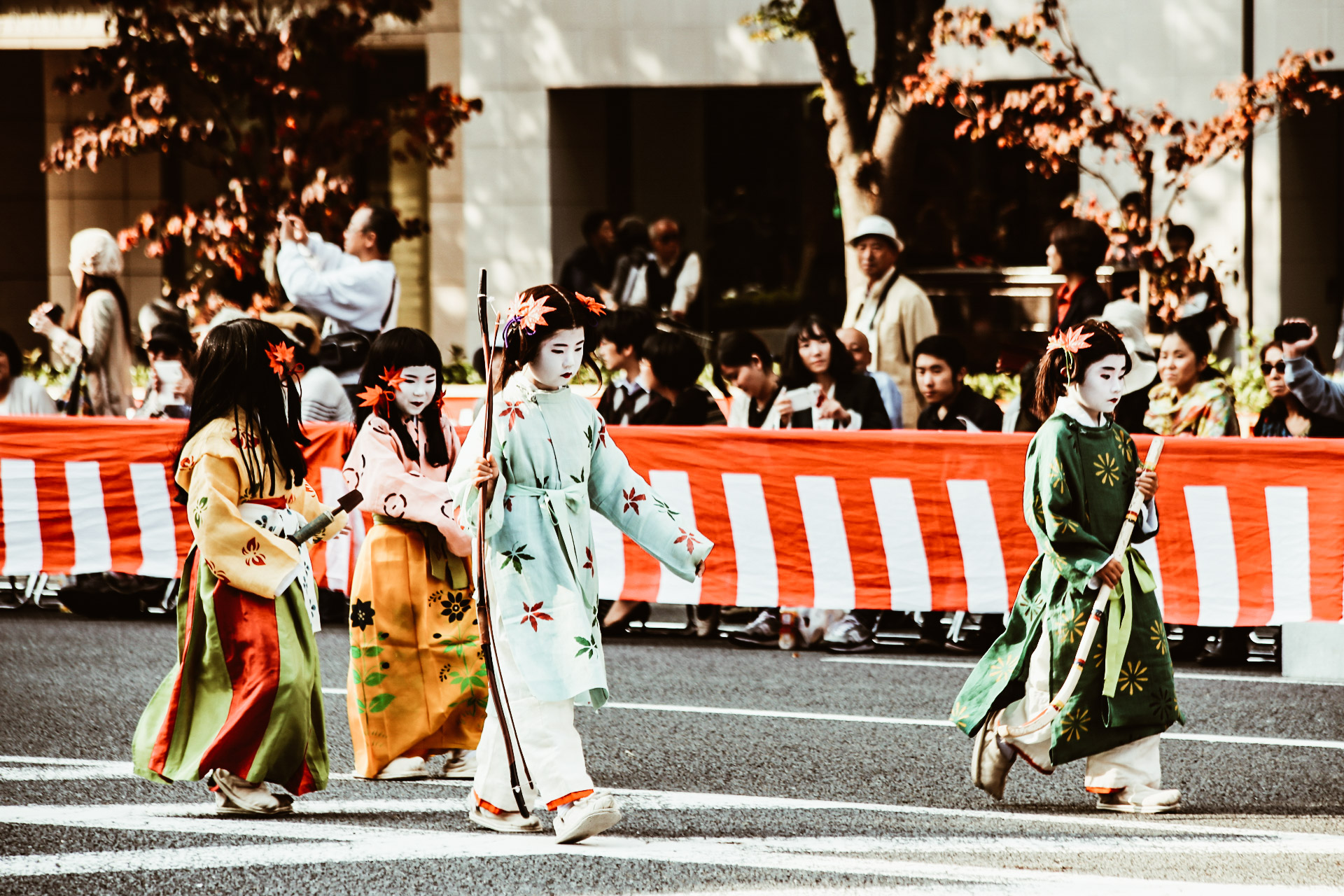
photo credits: travel-on.planet-muh.de
The origins
This festivity has its roots in the oldest history of Japan and recalls, through an impressive historical costume parade, the events and characters that have marked the life of the city since its foundation. It has been held since 794 by Emperor Kanmu (桓武天皇, Kanmu Tennō) until the transfer of the capital to Edo in 1868 by the decision of Emperor Mitsuhito.
Since its creation under the name of Heian Kyo (平安京, "capital of tranquillity and peace"), Kyoto has remained the capital of Japan almost uninterruptedly for over a thousand years. With the end of the Tokugawa Shogunate and the beginning of the Meiji Era, the entire imperial court was transferred to Edo, which became Tokyo (東京, literally "eastern capital").
In 1895 on the occasion of the 1100th anniversary of its foundation, the governments of the city and the prefecture of Kyoto established the Jidai Matsuri with the intention of restoring lustre to the ancient capital. Along with this, the aim was to honour the memory of the emperors Kanmu and Komei through the construction of the majestic Heian shrine.
A thousand years of history on the road
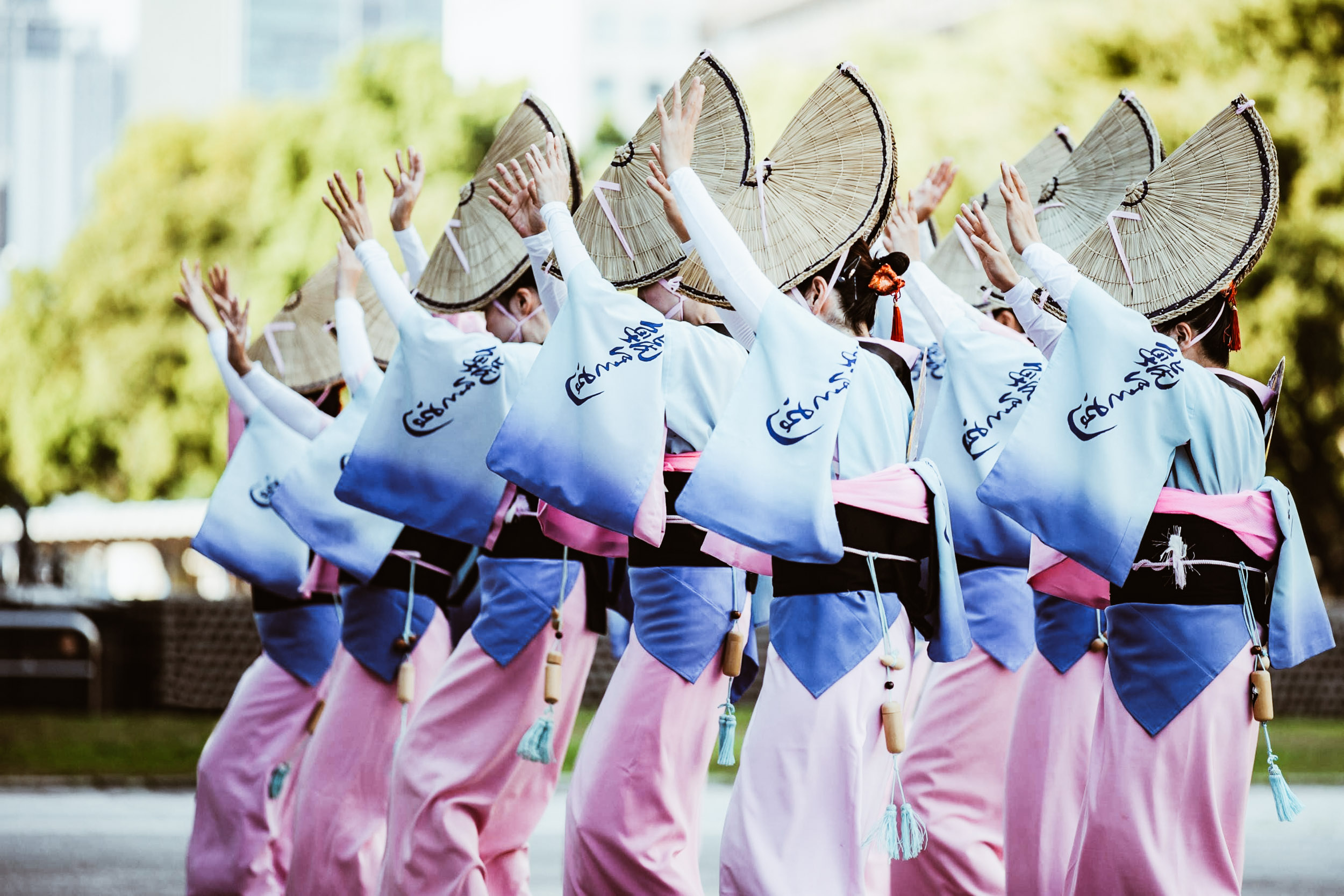
photo credits: fodors.com
Since then, on October 22 of each year, Jidai Matsuri brings back to life the splendour of feudal Japan. This allows residents and tourists to relive the life of the ancient capital for a few hours. Today, the main attraction of the festival is the Jidai Gyoretsu. It is a historical parade in which over two thousand participants take part, dressed in period costumes or in costumes meticulously reproduced by the craftsmen of Kyoto.
At the head of the parade are the mikoshi (portable sanctuaries) dedicated to the Kanmu and Komei emperors and the festival's honorary commissioners, on horse-drawn carriages in the style of the mid-19th century and from there the parade unfolds in reverse chronological order, from the Meiji Era to the Heian period, through about twenty thematic groups, which make it possible to rediscover, era after era, the characters who contributed to the history of the city, from simple peasants and soldiers to prestigious historical figures, such as the unifiers of the country Oda Nobunaga, Toyotomi Hideyoshi and Tokugawa Ieyasu, or figures of religious or cultural importance, such as Murasaki Shikibu, author of the famous "Genji Monogatari". The figures are accompanied by the music of drums and flutes, which together with the over 12,000 historical artefacts used, allow spectators to immerse themselves completely in the atmosphere of past eras.
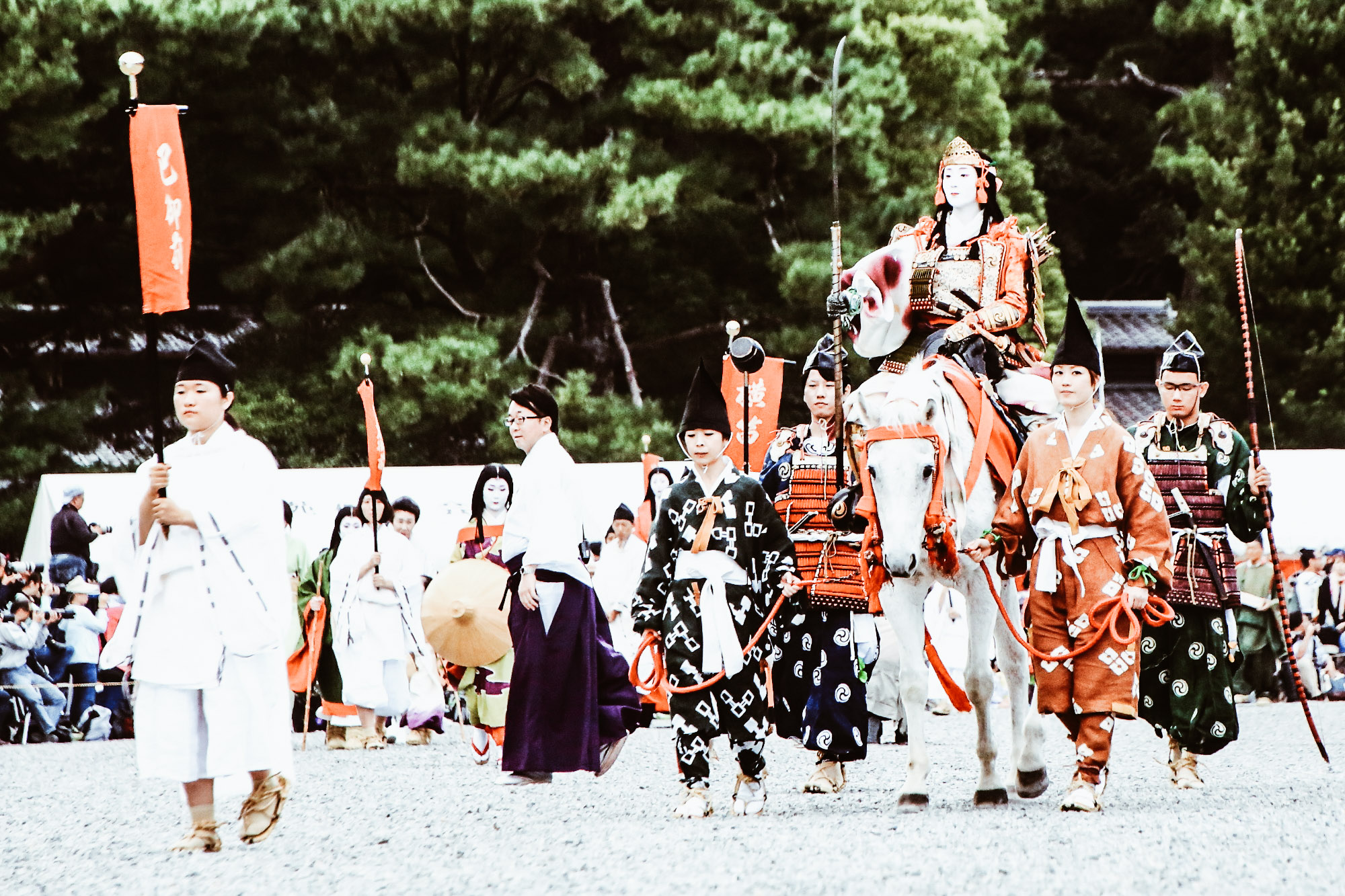
photo credits: blog.halal-navi.com
The long procession leaves at 12.00 noon from Kyoto Gosho, the imperial palace. It then winds for hours through the streets of the city centre, touching the most evocative and significant places. We see it passing by Oike and the Okazaki district, finally reaching the Heian Sanctuary. Here the Festival ends with the ceremonies foreseen by the Shinto rite.
Nada no Kenka Matsuri
From October 14th to 15th of each year, in the Matubata Hachiman Shrine (松原八幡神社) in the city of Shirahama in Himeji, Hyogo Prefecture, the Nada no Kenka Matsuri (灘のけんか祭り) one of the biggest autumn festivals in Japan is held.
Nada no Kenka Matsuri, Fighting for blessings
Author: Sara
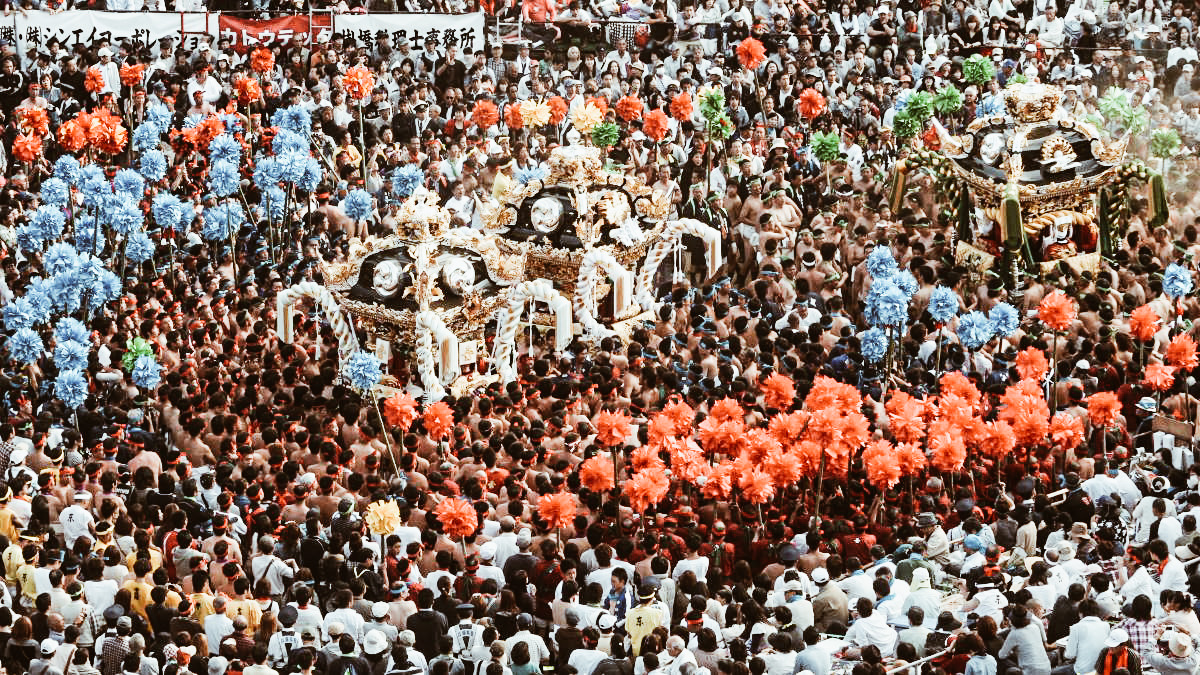
photo credits: armidaleexpress.com.au
The term "kenka"(けんか) contained in the name of the Festival means "to fight", for this reason, in the current language, it is defined as "the Festival of the fight" in which the Kami (the gods) will bless the winner of the fight with a good harvest. Given the impetuousness with which it takes place, only high school boys and men up to the age of 45 can participate in the event according to Shinto tradition. In addition, participants must belong to 7 specific villages: Higashiyama (東山), Kiba (木場), Matsubara (松原), Yaka (八家), Mega (妻鹿), Usazaki (宇佐崎), Nakamura (中村).
October 14: The Eve "Yoi-Miya" (宵宮)

photo credits: armidaleexpress.com.au
At 11:00 am everything is ready for the "Neri-dashi" parade (練りだし). The 7 Yatai (small sacred floats) from the 7 villages go to the Matubata Hachiman Shrine to receive the divine blessing, "Miya-Iri" (宮入). Here the Yatai compete in the first competition called "Neri-Awase" (練り合わせ), competing against each other. A sort of "preparation" because the real "fight" will take place the next day and will be even more difficult. At this point, the "Shishimai" takes place: a dragon dance in front of the elementary school of Shirahama.
October 15: Hon-Miya the heavy Yatai clash

photo credits: diversity-finder.net
The main event of the Festival starts at 5:00 am. The lion of the village of Matsubara (松原の獅子) celebrates the dragon dance at the Sanctuary to worship the gods. Afterwards, the ceremony moves to the ocean where the participants of the villages eliminate their impurities of the spirit by bathing in cold water (Osogi 禊). At this point, the Miya-Iri (opening ceremony) at the Matubata Hachiman Shrine is started with the blessing of the gods. At last, the thinking confrontation begins: the first are the 3 Mikoshi (the least expensive portable sanctuaries of the Yatai) of the village in charge of hosting the festival (every year the place changes alternating between the 7 villages).
The first Mikoshi (一の丸) is very heavy and is carried by men over 36 years old. The second (二の丸) is a bit lighter and is carried by men between 26 and 35 years old. The third Mikoshi (三の丸) is very light and is worn by men under 25 years old.
They fight each other twice (神輿合わせ, mikoshi-awase): first in front of the main building of the Sanctuary, then in the battlefield at the foot of Mount O-Tabi-Yama (御旅山). At the end of this clash, it is the Yatai's turn on the battlefield (Neri-awase 練り合わせ).
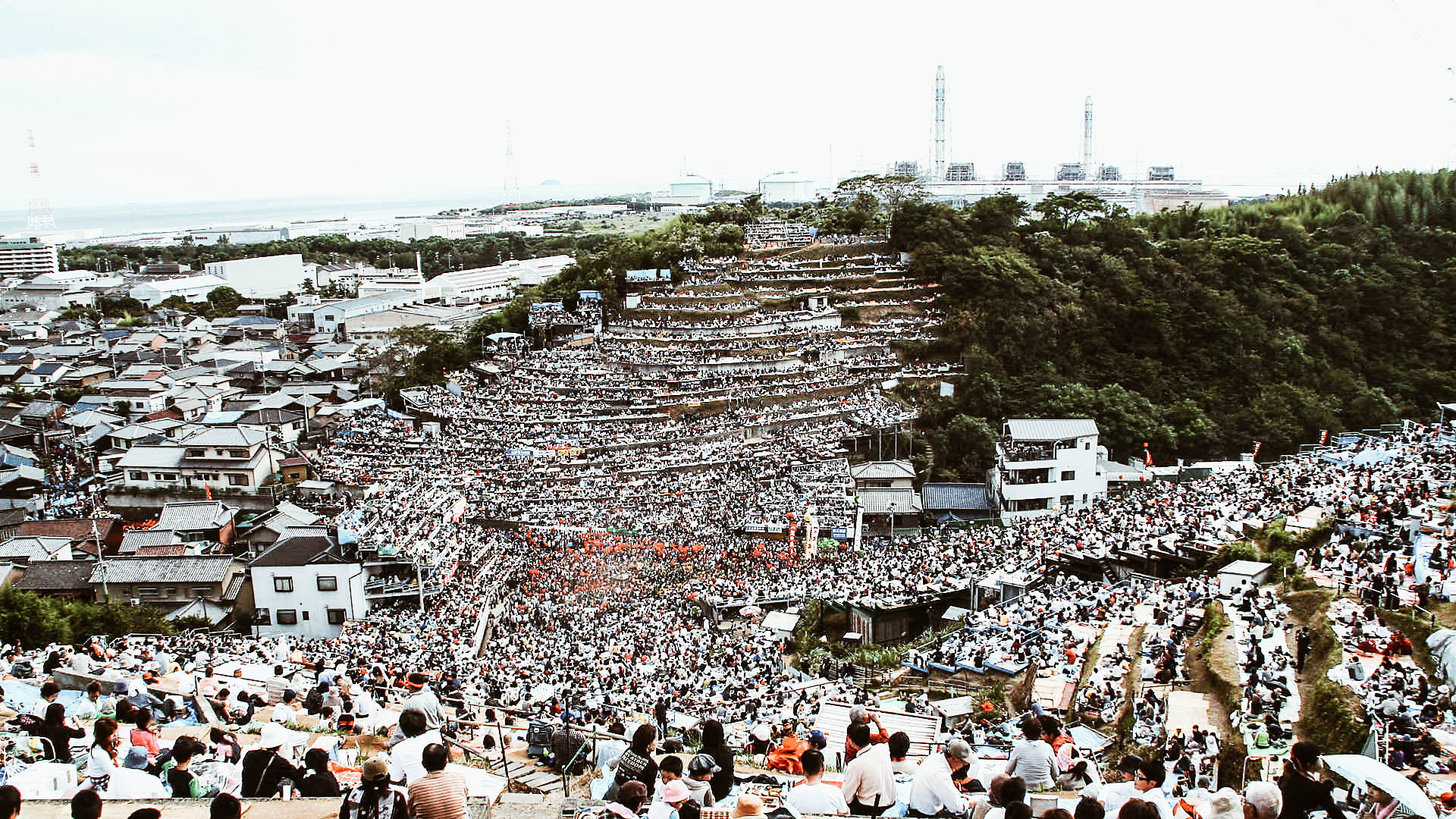
photo credits: kabegami.image.coocan.jp
The excited cries of spectators and participants make the event particularly lively and full of passion. At the end of the battle, the 3 Mikoshi and 7 Yatai are taken to the top of the mountain where prayers are said. the Nada no Kenka Matsuri ends with the descent from the mountain which will take place in the same order in which the villages have climbed.









